
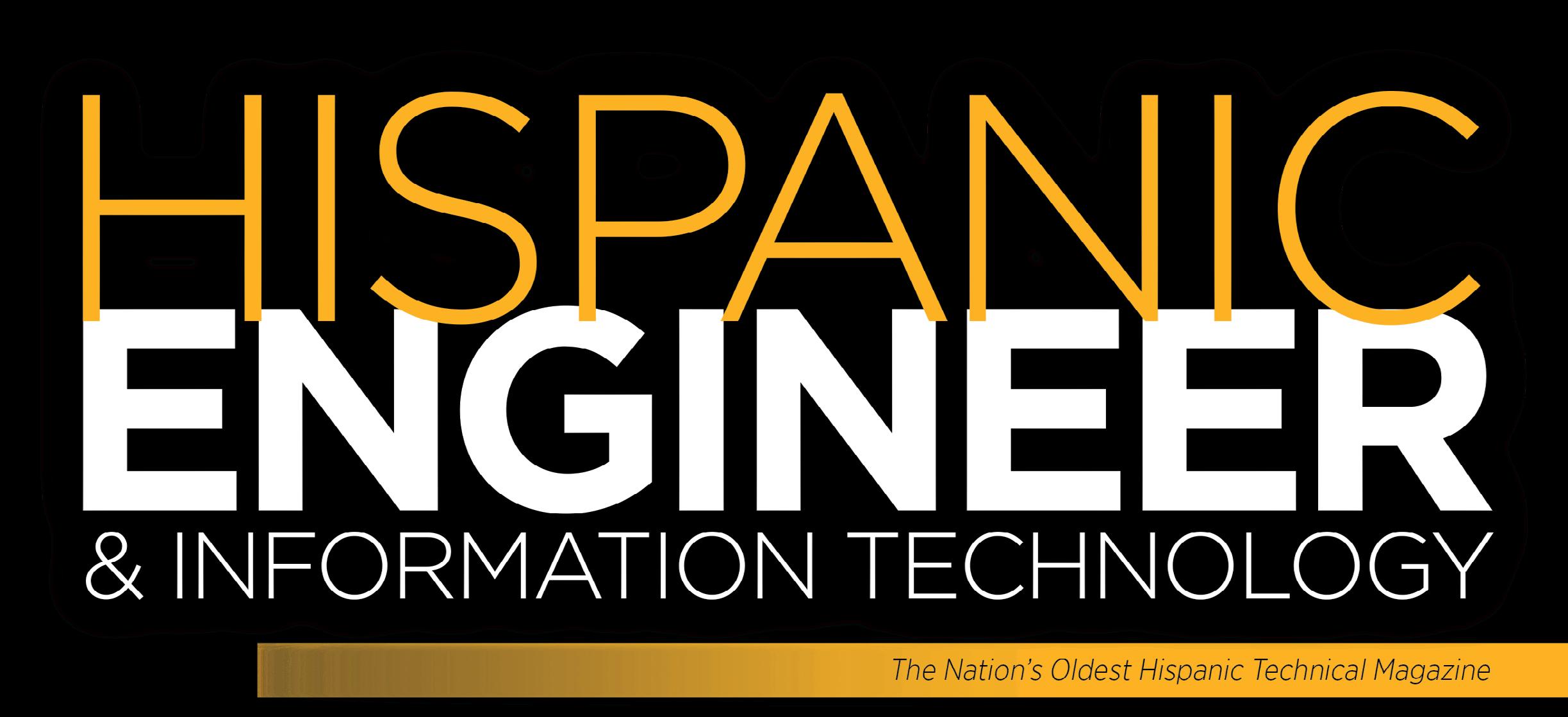
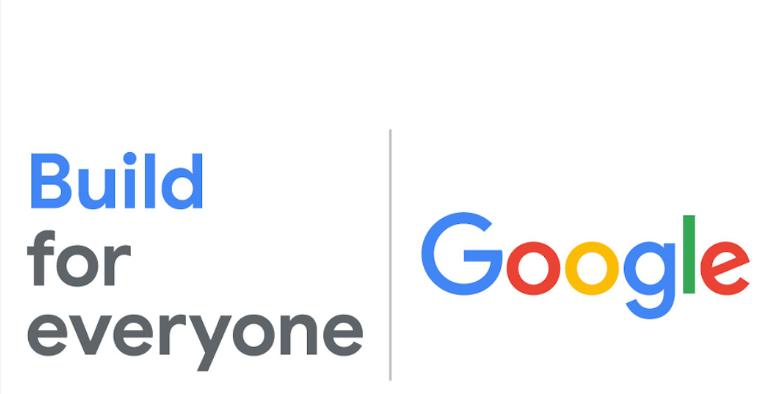




At Abbott, we believe that diverse ideas, perspectives, and expertise are the keys to creating life-changing solutions that empower people worldwide to live healthier, fuller lives.
As a global healthcare leader, we are dedicated to enhancing life at every stage. Our comprehensive portfolio spans diagnostics, medical devices, nutritionals, and branded generic medicines, reflecting our commitment to innovation and excellence in healthcare.
With a team of 114,000 passionate colleagues serving in over 160 countries, we are united in our mission to transform the face of healthcare. Together, we are making a difference, one breakthrough at a time. Join us on this incredible journey.
Learn more at: https://abbo.tt/hispanic-engineer-it-25

Connect with us:


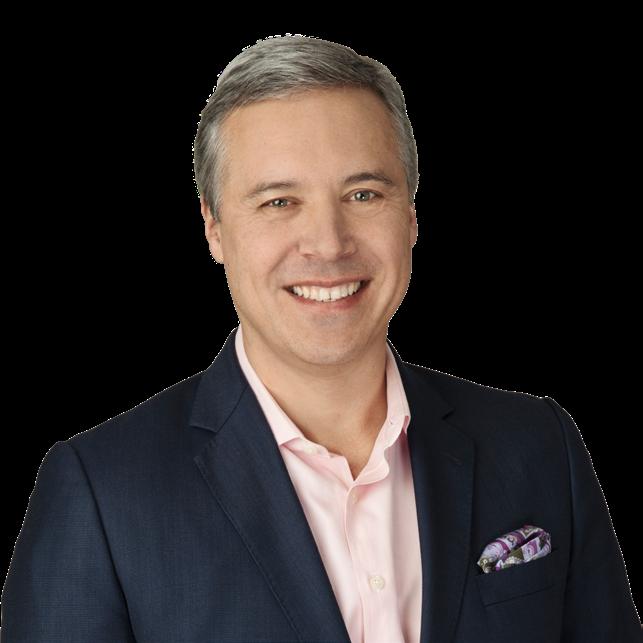
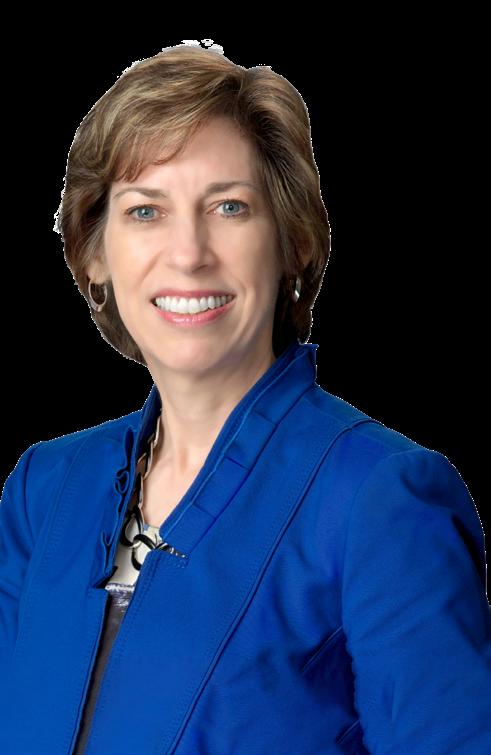


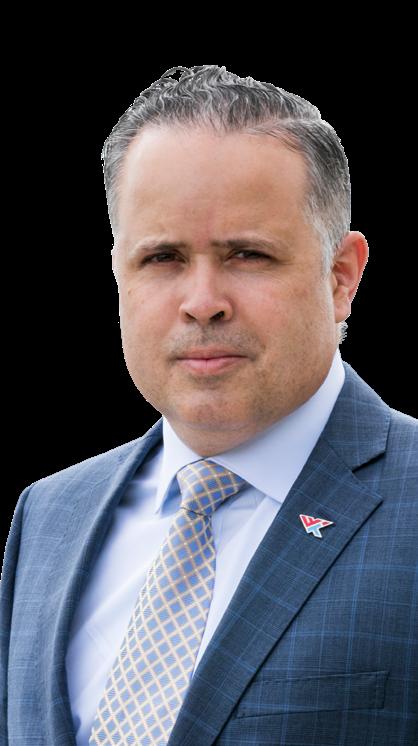
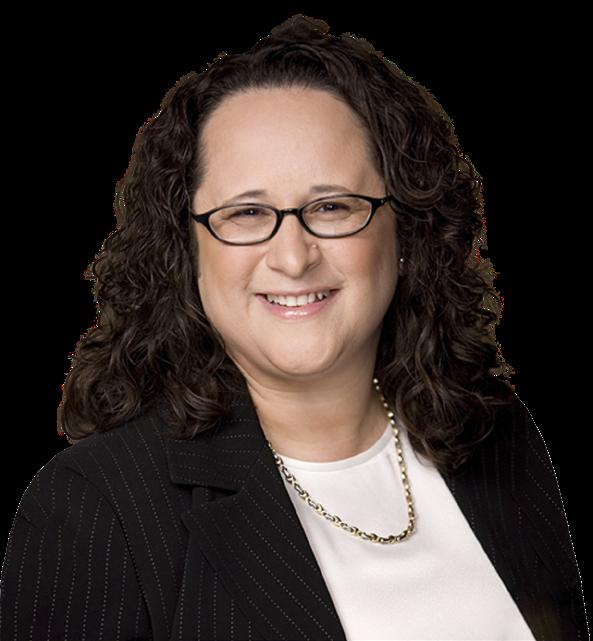




1
Highlights of upcoming conferences and events, as well as the latest STEM news
Engineer’s Toolkit
Feeling stuck in your STEM career?
Uncover the networking secrets and mentorship strategies that can unlock doors you never thought possible Industry Spotlight
Discover how this giant industry is prioritizing skills over degrees and creating pathways for a more diverse generation of professionals
Communities across the nation are empowering Latino youth to become the next generation of STEM leaders
As I reflect on the 40th anniversary of Hispanic Engineer & IT Magazine, I'm amazed by the remarkable journey our community has traveled and the current path we are on.
Four decades of recognizing Hispanic excellence, celebrating innovation, and championing diversity in STEM is more than just an anniversary. This edition is a testament to the work ethic, tireless resilience, bulldog tenacity, and significant contribution the Hispanic community has made to the technological advancements of America. This is all part of what makes our nation great.
When this publication first began, Hispanic representation in STEM was minimal. Today, while we still have much ground to cover, our presence has grown significantly. This growth didn't happen by accident—it was fueled by intentional mentorship, uncompromising advocacy, and the persistent excellence of Hispanic engineers and IT professionals who refused to be defined or confined by stereotypes, and who relentlessly broke through barriers.
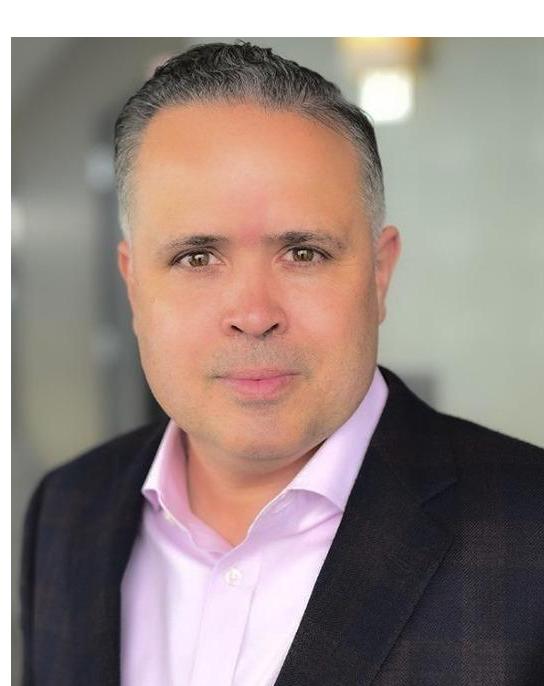
Representation matters profoundly. When young Hispanic students see professionals who look like them, or who sound like them, succeeding in technology and engineering, possibilities expand, and dreams are born. This magazine has been instrumental in showcasing these role models for 40 years, inspiring generations to envision futures they might otherwise never have considered possible.
Never underestimate the power of a dream!
The innovations highlighted in these pages over the decades tell a story of Hispanic ingenuity contributing to global technological advancement. From aerospace engineering to generative AI, from cloud computing to advanced cyber security, Hispanic engineers have been at the forefront of solving immeasurably complex problems and creating solutions that benefit humanity worldwide.
Our community's diverse perspectives are more critical than ever in today's rapidly evolving technological landscape. The convergence of machine learning, quantum technologies, edge computing, and autonomous systems demands varied viewpoints and inclusive excellence— strengths our community brings to the table.
How did a magazine and a TV show change the face of STEM? Discover the story of Hispanic Engineer's legacy
Throughout my own journey—from 25 years of military service to corporate leadership—I was pressured to come up with innovative solutions to complex challenges. By the grace of God, I was successful at every stage. As a son of immigrant parents from the Dominican Republic, I had to navigate a path where Hispanic mentors were scarce and representation at the highest levels of leadership was virtually nonexistent. Thankfully, I was able to push through these challenges by remaining focused on the path God paved for me.
Today, I'm thankful to see greater representation and encouraged by the progress we continue to make together.
Here's to four remarkable decades and to the bright future our community continues to build with purpose, resilience, and determination.
Rick Pina COO & CRO | Inspired Solutions, Inc.



sdvwvefvvwdvdvdvwdv

EXECUTIVE OFFICE
Tyrone D. Taborn, CEO and Publisher
Jean Hamilton, CFO, President
Ty Taborn, Esq., Executive Sr. V.P. & General Counsel
Kwan Hurst, COO, Operations
Alex Venetta, Exec. V.P. of Corporate Development
Eric Price, V.P., Human Resources
EDITORIAL AND CONTRIBUTING EDITORS
Rayondon Kennedy, Director
Lango Deen, Technology Editor
Michael Fletcher, Contributing Editor
Gale Horton Gay, Contributing Editor
Garland L. Thompson, Contributing Editor
Roger Witherspoon, Contributing Editor
GRAPHIC & DIGITAL DESIGN
Beverly Wladkowski, Creative and UX Director
Bryan Davis, Digital Director
Rachael DeVore, Multimedia Designer
Courtney Taborn, Digital Marketing Manager
Jessica Hernandez, Graphic Designer
DIGITAL PLATFORM AND DEVELOPMENT
Nikkie Stevens, Director of Metaverse Platforms
Terrence Fooks, Metaverse Platform Program Manager & Client Relations Specialist
CORPORATE AND ALUMNI RELATIONS
Dr. Gwendolyn Boyd, CCG Alumni Committee Chair and President
Dr. Eugene DeLoatch, Chairman, BEYA Alumni Group
Vice Admiral Andy L. Winns, USN (Ret) National Chair, BEYA Military Alumni
Oliver “Bo” Leslie, Retired Program Manager, Historically Black Colleges and Universities/Minority Institutions, The Boeing Company
Monica E. Emerson, Women of Color STEM Conference National Chair
Matt Bowman, CCG Military Program Manager Stars and Stripes Committee Executive Director/Chief of Staff for VADM Walt Davis, USN (Ret.)
SALES AND MARKETING
Gwendolyn Bethea, V.P., Corporate Development
Kameron Nelson, Account Executive
Lucille Kennedy, Sales Support Assistant
Jay Albritton, Social Media Account Manager
JOBMATCH AND STUDENT DEVELOPMENT PROGRAMS
Ashley Turner, University Relations Manager
Rod Carter, Recruitment Specialist, College Relations
Shelia Richburg, College Coordinator
CONFERENCE AND EVENTS
Jennifer Roberts, V.P., Partner Experience
Ana Bertrand, Conference Coordinator
Brandon Newby, Customer Service Associate
Sarah Blum, Youth Services Coordinator
Tarase Whetstone, Regional Outreach Manager
ADVERTISING SALES OFFICE
Career Communications Group, Inc.
729 E. Pratt Street, Suite 504
Baltimore, MD 21202
Phone: (410) 244-7101 / Fax: (410) 752-1837

We

by Lango Deen editors@ccgmag.com

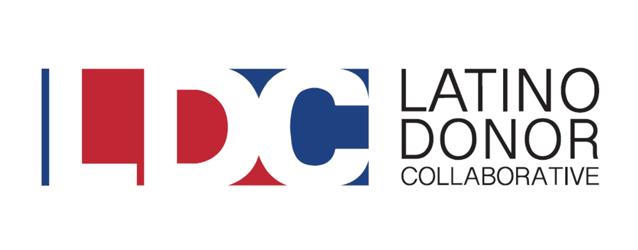
Mexico’s President Claudia Sheinbaum invited the Latino Donor Collaborative (LDC) to participate in a landmark event held in January 2025. LDC President and CEO Ana Valdez presented data showing that Latinos in the United States drive over 50 percent of new business creation and are projected to make up 78 percent of the workforce growth in the coming decade.
The 2024 LDC U.S. Latinos in Tech Report: AI highlights latinos' growing engagement in the field. Between 2018 and 2022, the percentage of U.S. Latinos in AI-related technical roles increased
from 48.7 percent to 58.7 percent. In contrast, the general U.S. workforce has seen only a 10.8 percent growth. While Latinos make up 19 percent of the U.S. population, we must ensure they are better represented in technical roles, especially in leadership positions at NASDAQ companies and within the AI sector. On a positive note, 14 percent of scaled Latino-owned businesses now leverage AI technologies, surpassing the 7 percent of white-owned companies. Furthermore, when comparing Latino youth with their white peers in AI adoption, the following encouraging trends emerge:
• Gathering Information: 54% of Latinos vs. 41% of whites
• Creating Pictures and Images: 39% vs. 24%
• Making Music: 27% vs. 7%
• Job Functions: 24% vs. 10%
The number of Latinos earning STEM degrees has increased by 101.6 percent from 2012–2013 to 2021–2022, and the number of computer science degrees awarded to Latino students has surged by 180 percent between 2011 and 2022.
In November 2024, L’ATTITUDE cofounders Gary Acosta and Sol Trujillo thanked their sponsors, partners Emilio Estefan and Oscar Muñoz, and participants over the course of seven years for helping them achieve their vision of creating a narrative about “Latinos in America’s New Mainstream Economy.”
Meanwhile, the Hispanic Association of Colleges and Universities (HACU) held a conference in Aurora, CO, themed "Championing Hispanic Higher Education Success."
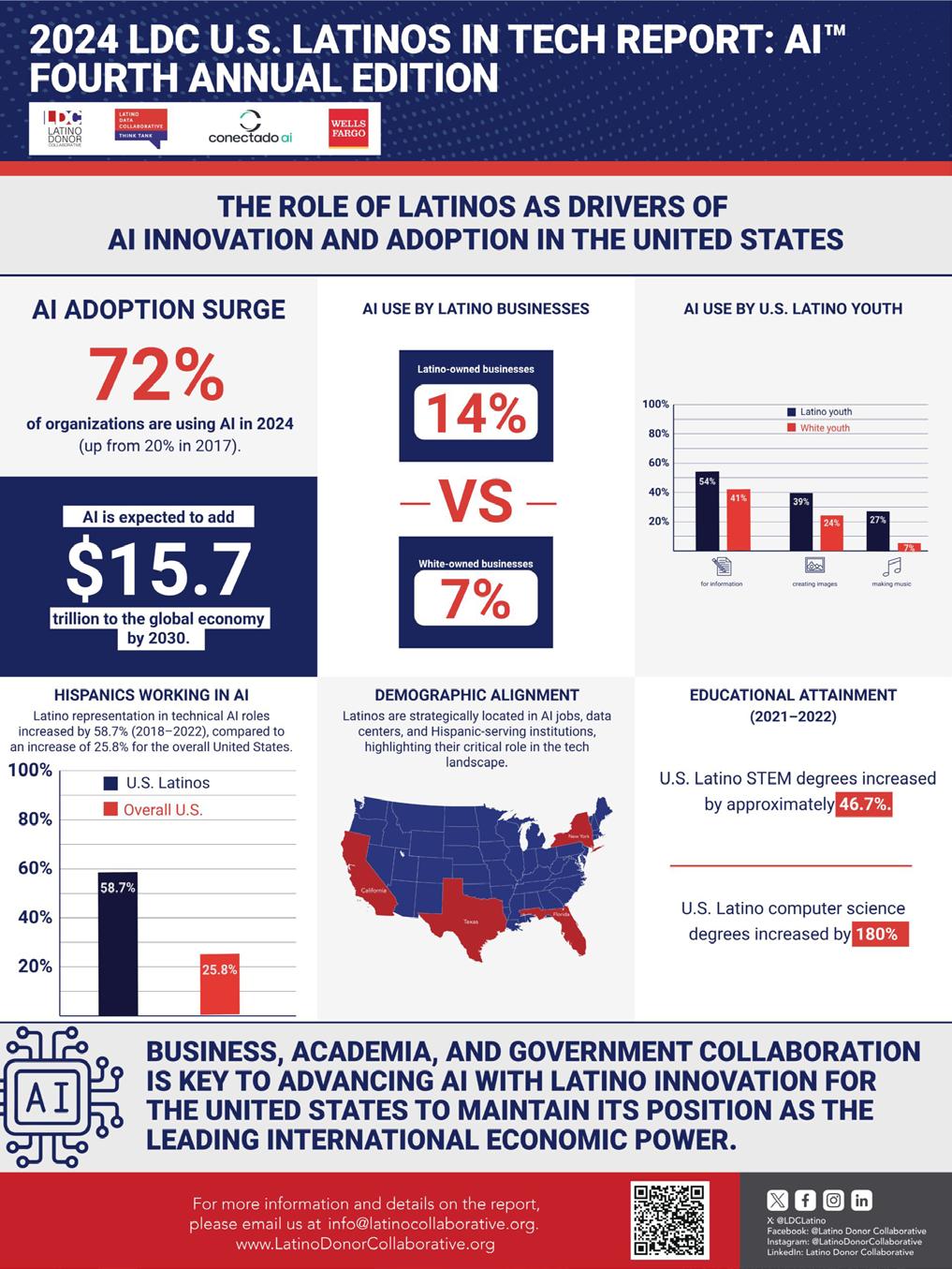
The Association of Latino Professionals for America (ALPFA) reported that its event raised $1.74 million for scholarships, with $900,000 already awarded in 2023.
In a spirit of unity, the Society of Hispanic Professional Engineers (SHPE) organized monthly "50th Fiesta" events leading up to its National Convention in Anaheim, California. These gatherings took place in Los Angeles, California; San Francisco, California; New York City, New York; Washington, D.C.; and more—all with the support of employers such as Bank of America, BAE Systems, and Chevron. Additionally, SHPE launched the weekly series "50 Stories for 50 Years of SHPE," highlighting the narratives of its
members and their enduring impact on the STEM landscape.
In a noteworthy achievement recognition, the American Indian Science and Engineering Society (AISES) honored Dr. Marlene Watson, a Navajo STEM leader, with the Ely S. Parker Award. This prestigious honor, named after the first Native American engineer, is a tribute to those who break barriers and pave the way for future generations.
Social media was abuzz with celebrations of the highlights from NDiSTEM, organized by the Society for the Advancement of Chicanos/ Hispanics and Native Americans in Science (SACNAS). The second day featured educational sessions and a powwow. Jorge Jimenez inspired many with his journey into biomaterials research, developing innovative solutions for rare eye diseases. Additionally, Dr. Martha I. Dávila-García and Dr. Joseph Hibdon were recognized for their tireless efforts to enhance diversity and inclusion in the STEM field. HE
AISES National Conference
October 2–4
Minneapolis, MN
GMiS Conference
October 2–4
San Diego, CA
WOC STEM DTXTM Conference
October 23–25
Baltimore, MD
SHPE National Conference
October 29–November 1
Philadelphia, PA
SACNAS National Diversity in STEM Conference (NDiSTEM)
October 30–November 1
Columbus, OH
HACU Annual Conference
November 1–3
Gaylord Rockies Resort & Convention Center Aurora, CO
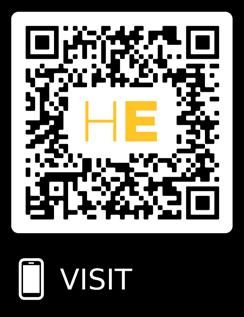


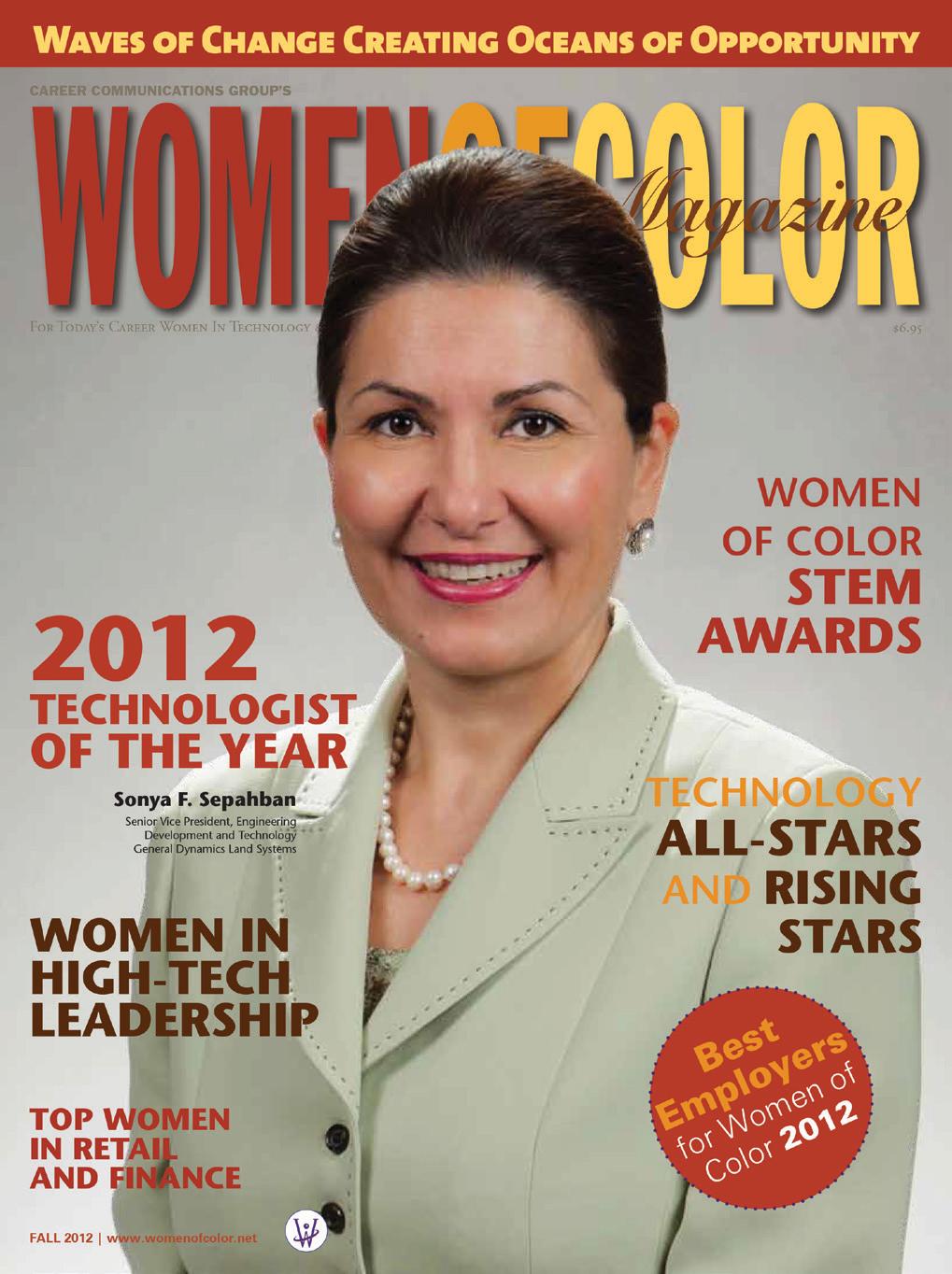


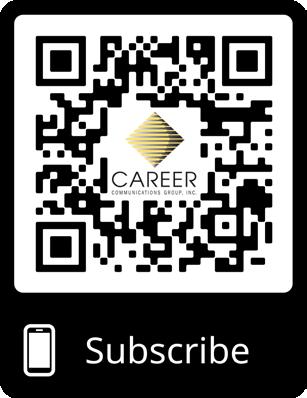




Intoday’s ever-changing landscape, professional networking is essential for career growth and advancement. The people you know and the connections that you make can open doors to numerous opportunities, from landing your first job to promotions to positions with more considerable influence and responsibility. At every stage of your life, you need mentors, advocates, and coaches to help you grow and progress.
However, networking can sometimes feel awkward. Many find it challenging to initiate those crucial first conversations or maintain connections effectively over time.
Fortunately, there are actionable
strategies that STEM students and professionals can utilize to build and maintain a strong professional network, thereby benefiting immensely from mentorship.
Initiating a conversation, especially in the realm of online networking, can be daunting. The key is to identify a point of connection. Mention something you have in common with the person, such as an element from their LinkedIn profile, a past conference where you might have crossed paths or a mutual acquaintance. When reaching out, it is advisable to have a clear purpose for the conversation. Explaining what
initially sparked your interest in them and how you became aware of them can serve as a solid foundation for starting a conversation.
A common question in networking revolves around how to follow up with someone when you do not have an immediate need or anything tangible to offer but still want to nurture and sustain the connection.
This brings us back to the reason you initially connected with the person. One effective strategy involves taking notes during networking events to aid your memory of how you met specific individuals and the substance of your discussions. When following up, it is
helpful to remind them where you met and provide an update on your current activities and your goals for your professional future.
“At every stage of your life, you need mentors, advocates, and coaches to help you grow and progress.”
While they might seem outdated to some, business cards still hold value, depending on your current career stage and your professional activities. They can provide a convenient and efficient way to exchange contact information swiftly. However, it is worth noting that some individuals might have difficulty recalling your name later.
It is perfectly acceptable if some people you reach out to do not respond or eventually stop responding, particularly in email communication. It is essential not to take this personally. There are instances where you can successfully restart a conversation on LinkedIn, especially if either you or the other person has experienced a change in circumstances, which may lead to a renewed interest in reconnecting.
Mentorship is an invaluable asset for career growth and development. A good mentor can serve as a coach,
advisor, and advocate, playing a crucial role in accelerating your professional growth.
Given that everyone possesses a unique set of skills and strengths, it is unrealistic to expect a single mentor to fulfill all your diverse needs. It is also essential to recognize that mentorship can take various forms, such as technical advice related to your job responsibilities or strategic guidance focused on your broader career path. Notably, mentors do not necessarily need to be employed within your company or even your specific industry. According to discussions at the BEYA STEM Conference, every professional should ideally have five mentors, each playing a distinct role in their mentee's development:
• The Master of Craft:
This mentor has accumulated experience in a role similar to yours and possesses a deep understanding of the challenges you face. They can provide invaluable assistance in overcoming these challenges and achieving technical success in your chosen field. This mentor may or may not be affiliated with your current company.
• The Champion of Your Cause:
This mentor occupies a higherlevel position within your company. They will actively advocate for you and facilitate your access to new opportunities for growth and advancement.
• The Anchor:
This mentor plays a pivotal role in helping you develop character as you progress in your career. Their focus is on your personal development, which, in turn, significantly contributes to your professional growth. This mentor
does not necessarily need to work within your specific field or industry.
• The Co-Pilot:
This mentor is a peer who is navigating similar challenges and experiences at the same time as you. You can exchange ideas, offer mutual support, and learn from one another as you progress in your respective journeys. This mentor may or may not be employed within your company or industry.
• The Reverse Mentor:
Mentorship is a mutually beneficial relationship. A reverse mentor is someone who values and appreciates your unique insights and input. It is worth noting that this mentorship role can sometimes overlap with one of your other mentorship relationships. When selecting a mentor, it is essential to consider not only what you stand to gain from the relationship but also the value and contributions you can bring to the mentor.
By implementing these networking and mentorship strategies, STEM students and professionals can effectively cultivate robust professional relationships and establish a dedicated support system that will foster their long-term career growth and success.
HE

Did
Latanya Buggs VP - Network & Field Ops

We get you. Because we empower you. And wherever you go, we got your back.
We support our V Teamers every step of the way - from employee resource groups to inclusive benefits, including paid parental leave, up to 6% 401(k) match, stock awards, up to four weeks of paid time off (vacation, holidays, and personal days) and more.
Connect with the best and brightest to help innovate and operate some of the world’s largest platforms and networks.
Verizon is here to help write “Her Story” at WOC STEM Conference.
Let's get going. Explore our open roles today.

contains forty short stories about Kathleen’s personal journey through a rare type of cancer that was diagnosed in 2023. She shares how she faced the tragic news from her doctors about her salivary gland cancer, and how God’s hand was at work while she went through treatment, recovery, and ultimately her transformation. Each story is God-inspired and includes Bible passages, thoughtprovoking questions, and simple prayers to help you focus your heart and mind as you battle with cancer or a similar health challenge.
Whether you are a believer in Jesus Christ or someone who discovered this devotional by chance, you will find relatable stories in this devotional book that will give you the strength and confidence needed to mount up and soar over any adversity in your life-present or future.
BY KATHLEEN J. GOODEN

ADABOUT THE AUTHOR
Kathleen Gooden’s devotional writings are about her journey with salivary gland cancer, which was diagnosed in April 2023. Each of the stories in the book are her personal reflections recorded in her prayer journals while she was dealing with this rare form of cancer. Throughout her journey she experienced a roller coaster of emotional and physical pain due to the changes in her physical appearance, speech, sight, and taste. It was from this place of weeping that she gained a greater understanding of God’s peace and a deeper dependence on His strength within her.

by Lango Deen editors@ccgmag.com

JPMorgan Chase is the largest bank in the United States by assets. It focuses on attracting, developing, and retaining a diverse workforce to meet its business goals.
The firm prioritizes skills over degrees, with about 75 percent of jobs for experienced hires not requiring a bachelor's degree. Additionally, women made up at least 16 percent of external hires for technology positions, a 5 percent increase from 2020.
In July 2024, CEO Jamie Dimon signed a Code of Conduct emphasizing the importance of diversity and inclusion. He declares that a diverse network of people, a vibrant mix of cultures, and a broad range of skills and experiences celebrate all the people of JPMorgan Chase around the world.
JPMorgan Chase's recruitment efforts include summer internships and
apprenticeships, as well as a strong focus on expanding diversity in its talent pipelines through over 70 programs.
In 2021, JPMorgan Chase hosted 3,000 summer interns, of whom 62 percent identified as Black, Hispanic, or Asian.
The firm hired at least 1,000 interns through its emerging talent programs and 200 through apprenticeship programs, a 50 percent increase from 2020.
The firm prioritizes skills over degrees, with about 75 percent of jobs for experienced hires not requiring a bachelor's degree.
JPMorgan
HJBC
More than 270 early-career software engineers were recruited from educational pathways outside the traditional degree path. At least 50 percent of the 2021 intern class were women.
According to the 2021 Environmental, Social & Governance Report focused on diversity, equity, and inclusion (DEI), signed by Robin Leopold, the executive vice president and head of human resources, the company has made significant strides with clear objectives, metrics, controls, and accountabilities.
The firm requests that employees selfidentify based on specified categories, including LGBTQ+, military veterans, and individuals with disabilities. These groups constituted 4 percent of the company, with 2 percent of seniorlevel employees representing each category.
The 2021 Workforce Composition data revealed a global gender breakdown of 49 percent women and 51 percent men. The board of directors included 40 percent women and 60 percent men, while the operating committee comprised 63 percent men and 37 percent women. Senior-level positions were mostly held by men, with 74 percent male and 26 percent female representation.
Global promotions comprised 39 percent women and 61 percent men. In contrast, in the United States, 53 percent of promotions were awarded to white individuals, and 47 percent were awarded to individuals from other ethnic backgrounds.
According to the report's U.S. race and ethnicity data, white employees constituted 46 percent of the total workforce, followed by Hispanics at 20 percent, Asians at 17 percent, Black people at 14 percent, and other groups at 3 percent.
The board of directors comprised 90 percent white and 10 percent Black members. The operating committee and senior-level employees were also predominantly white.
However, 63 percent of the campus and internship classes were from diverse ethnic backgrounds, with whites making up 37 percent.
JPMorgan has established DEI Centers of Excellence. The "Advancing Hispanics & Latinos" (AHL) initiative, established in 2021, seeks to expand career opportunities for Hispanic and Latino individuals. The AHL Fellowship Program, launched in 2022, expands fellowship opportunities for Hispanic and Latino students. The firm has committed up to $20 million to a venture fund that invests exclusively in early-stage, Latino-led, and Latinoowned technology-oriented businesses with high growth potential.
In 2021, the Office of Asian & Pacific Islander Affairs partnered with "Women on the Move" to promote career advancement programs.
Additionally, the Office of Disability Inclusion, established in 2016, furthered JPMorgan Chase's commitment to advancing careers and creating an inclusive workplace environment for individuals with disabilities. In 2021, there were over 370 LGBT+ managing directors and executive directors.

Launched in 2019, the "Advancing Black Pathways" program aims to foster career opportunities for Black talent by helping college undergraduates secure internships and entry-level positions upon graduation.
In 2021, the program expanded to accommodate 169 students, up from 74 in 2020, with 90 percent of the fellows accepting internship offers from the firm. The program also introduced mentoring circles in partnership with the Black Executive Forum and the BOLD Business Resource Group, enrolling over 600 mentees in 2021.
“In 2021, JPMorgan Chase hosted 3,000 summer interns, of whom 62 percent identified as Black, Hispanic, or Asian.”






Amentum is a global leader in advanced engineering and innovative technology solutions, trusted by the United States and its allies to address their most significant and complex challenges in science, security and sustainability. With a global team of more than 53,000, we’re working to create a secure and vibrant future.
by CCG Editors editors@ccgmag.com
Hispanic voices are still underrepresented in STEM fields, and based on the country’s current undergraduate population, it’s not a gap that’s closing anytime soon. Today, Hispanic students are less likely to earn a degree in STEM than in any other field, according to Pew Research Center. In response, industry and community-led programs are connecting more Latino youth with opportunities to learn about STEM careers. Building new pathways for Hispanic youth to access highpaying jobs in these industries requires dynamic mentorship and workforce development programs in communities across the country.
One organization that’s leading the way is Advancing Chicanos/Hispanics & Native Americans in Science (SACNAS). The member-driven
group has more than 150 student and professional chapters. Its SACRED mentoring program pairs students with professional STEM mentors in their field for six months to provide tips on applying for graduate schools and research programs, building a professional resume, and preparing for job interviews. Community College Day, a feature of its annual conference, provides the students with a deeper look at the STEM careers available to them.
Extravaganza program from Latinos in Science and Engineering (MAES). At this year’s San Jose State University (SJSU) Science Extravaganza, college students hosted hands-on workshops at Bay Area schools and invited more than 350 students to visit campus and meet industry partners, attend career workshops, and picture themselves as future STEM college students. Planning for the event was led by a coalition of Hispanic SJSU students, with support from industry partners, including the Intuitive Foundation, Adobe, and NASA Ames Research Center.
Latino communities is the goal of the Science
For one week in July, Latina Labs hosts sixth- to eighth-grade students for a hands-on introduction to coding, engineering, biology, science, mathematics, and statistics. These Latina students build critical thinking and problem-solving skills, meet new role models in STEM fields, and learn about the careers they can pursue in the future. The program is the brainchild of Virginia nonprofit Latinas Leading Tomorrow (LLT), which offers
education and leadership programs designed to reduce STEM barriers and increase college and career readiness. Its programs integrate Latina culture, traditions, and lived experiences, and are led by bilingual volunteers.
The Society of Women Engineers (SWE) is also inspiring the next generation of Latinas to pursue careers in engineering with programs that target first-generation and immigrant students. Local SWENext Clubs bring together professional SWE members and volunteers with K–12 students. In addition to igniting their curiosity in STEM careers, the program provides a diverse and welcoming pre-college community to connect with their peers and industry role models. Virtual career resources and online training programs connect these young students from across the country—both boys and girls—with engaging new ways to explore STEM disciplines.
The Hispanic population is one of the fastest-growing groups in the U.S., according to the U.S. Census Bureau’s Current Population Reports, with an expected growth from 19 to 26 percent of the U.S. population by 2060. But increasing the number who work in STEM careers is about more than just
connecting this growing population to high-paying jobs; it’s also about ensuring diversity of thought within the careers that are shaping the future. Adding new perspectives to STEM fields helps ensure that the solutions of tomorrow meet the needs of a population that is only growing more diverse—and STEM careers provide opportunities to solve global challenges and develop the technological innovations that will move our world forward.
The 2024 SHPE-LDC U.S. Latinos in Engineering and Tech Report shares that while Latino enrollment in engineering programs is increasing— by a reported 39 percent from 2012 to 2022—challenges remain when it comes to degree completion and career attainment. Latino students must overcome challenges like financial barriers and a current lack of career mentoring and support systems. While the targeted workforce development programs that are in place have shown success in empowering these students to choose STEM careers, more investment is needed to meet the growing demand.
The U.S. faces a STEM workforce shortage, with nearly 12 million jobs projected by 2033, according to the U.S. Bureau of Labor Statistics. To meet this need and ensure that the innovators, creators, and problem
“Adding new perspectives to STEM fields helps ensure that the solutions of tomorrow meet the needs of a population that is only growing more diverse”
solvers of the future are diverse and well-supported in their careers, communities across the U.S. must come together to help. Industry partners can commit to hiring diverse candidates, expanding career mentoring programs, and highlighting Latino role models. In addition, educational institutions must continue to improve diversity within STEM faculties and include Latino voices in their curricula. As individuals, community members can help local programs grow as donors, volunteers, and vocal supporters. HE

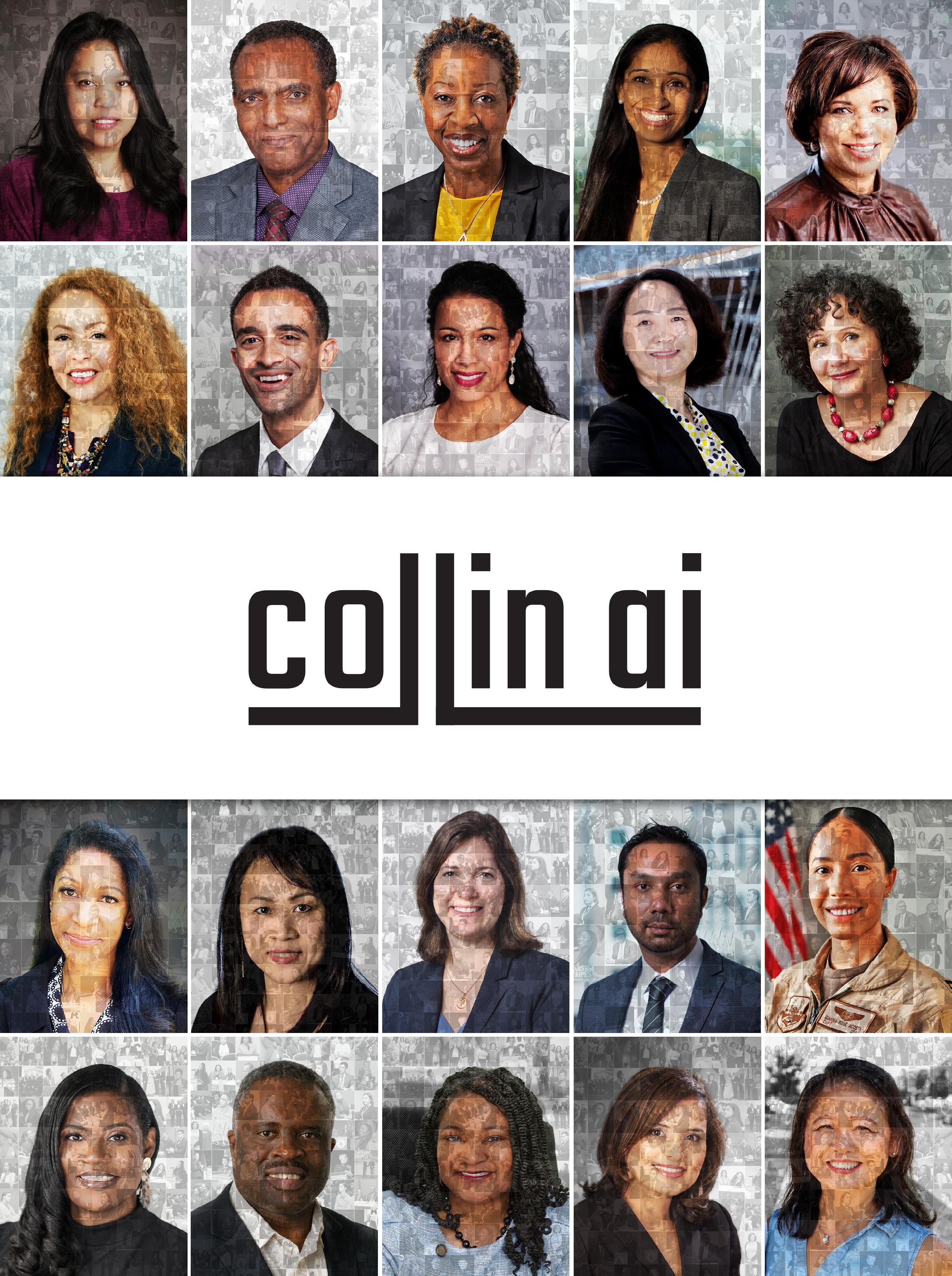



Since its launch, Hispanic Engineer magazine has been more than a publication focused on job and career opportunities in science, technology, engineering, and math (STEM). For decades, it has been a cultural touchstone. One of its most transformative initiatives, the Success Through Education television show, was a bold proclamation that untapped talent has a profound stake in the nation's technological future. By intertwining stories of triumph with star-studded allure, the show redefined what it meant to dream big and achieve even more significance.
In the early 1990s, Hispanic Engineer magazine recognized an alarming disconnect: While many communities were the heartbeat of America’s
workforce, their representation in STEM fields was disproportionately low.
To bridge this chasm, the magazine launched Success Through Education, a televised phenomenon that didn’t just tell stories—it showcased destinies. It was a celebration of resilience, excellence, and the unyielding power of education.
This was no ordinary award show. It was a paradigm shift. The program offered young people a mirror reflecting their potential—showing them engineers, scientists, and leaders who looked like them, spoke like them, and understood their struggles. It told our youth, “You belong here. You are essential.”
The Success Through Education show
blended the glamour of celebrity with the profound inspiration of STEM excellence. Hosted by the inimitable Paul Rodriguez, the graceful Rachel Ticotin, and the iconic Edward James Olmos, the program became a masterclass in balancing entertainment with an unrelenting educational mission.
Olmos, a stalwart advocate for education and known for his role in Stand and Deliver, delivered a poignant message that underscored the transformative power of knowledge. Rodriguez infused the program with humor, breaking barriers and making complex achievements relatable. Meanwhile, musical acts like Sweet Sensation and Keith Frost electrified the audience, ensuring that the STEM message reached the hearts of young viewers everywhere.
The honorees of the evening were not just achievers—they were trailblazers, embodying the very spirit of persistence and innovation:
• Rave Barceló, Most Promising Engineer Award: A young immigrant who overcame language barriers to excel in electrical engineering, Barceló’s work on radar systems and missile technologies proved that brilliance knows no boundaries.
• Gabriela Gonzalez, Outstanding Student Leader Award: Her journey from financial hardship to academic excellence at the University of Washington exemplified resilience. Gonzalez became a beacon for her peers, showing that determination can rewrite any narrative.
• Linda Garcia Cubero, Pioneer Award: The first Latina to graduate from a U.S. service academy, Cubero shattered ceilings and inspired a generation of women to reach for the stars.
• Manuel Santana, Outstanding Technical Contribution Award: As a pioneer in fiber optics, Santana didn’t just revolutionize telecommunications—he redefined what was possible for Hispanic innovators on the global stage.
What made Success Through Education groundbreaking was its ability to transcend the screen. It didn’t just
“By showing that STEM careers were not only accessible but also transformative, [Success Through Education] empowered young Hispanics to imagine and achieve futures once thought unattainable.”
honor excellence; it created a cultural shift. The program dismantled stereotypes and built bridges. By showing that STEM careers were not only accessible but also transformative, it empowered young Hispanics to imagine and achieve futures once thought unattainable.
Even President George H.W. Bush’s address during the show amplified its gravitas. His acknowledgment of Hispanic contributions to STEM underscored a national recognition of
the community’s vital role in shaping America’s technological landscape.
The impact of Hispanic Engineer magazine and the Success Through Education show is profound and enduring. These stories—of struggle, triumph, and unyielding ambition—have inspired a generation of STEM leaders. Today, the ripple effects of this initiative are visible in classrooms, laboratories, and boardrooms nationwide.
By offering a platform that celebrated both individual and collective achievements, the magazine and the show reinforced an unwavering truth: Education is the great equalizer. It’s the bridge that transforms dreams into reality and aspirations into achievements.
Reflecting on the legacy of Hispanic Engineer magazine and its landmark television program, one thing becomes abundantly clear: Representation is not optional—it is essential. By weaving together the triumphs of STEM heroes with the star power of cultural icons, Success Through Education delivered a clarion call to a new generation. It proved that through education, hard work, and unity, there is no barrier too high, no challenge too great, and no dream too distant. HE

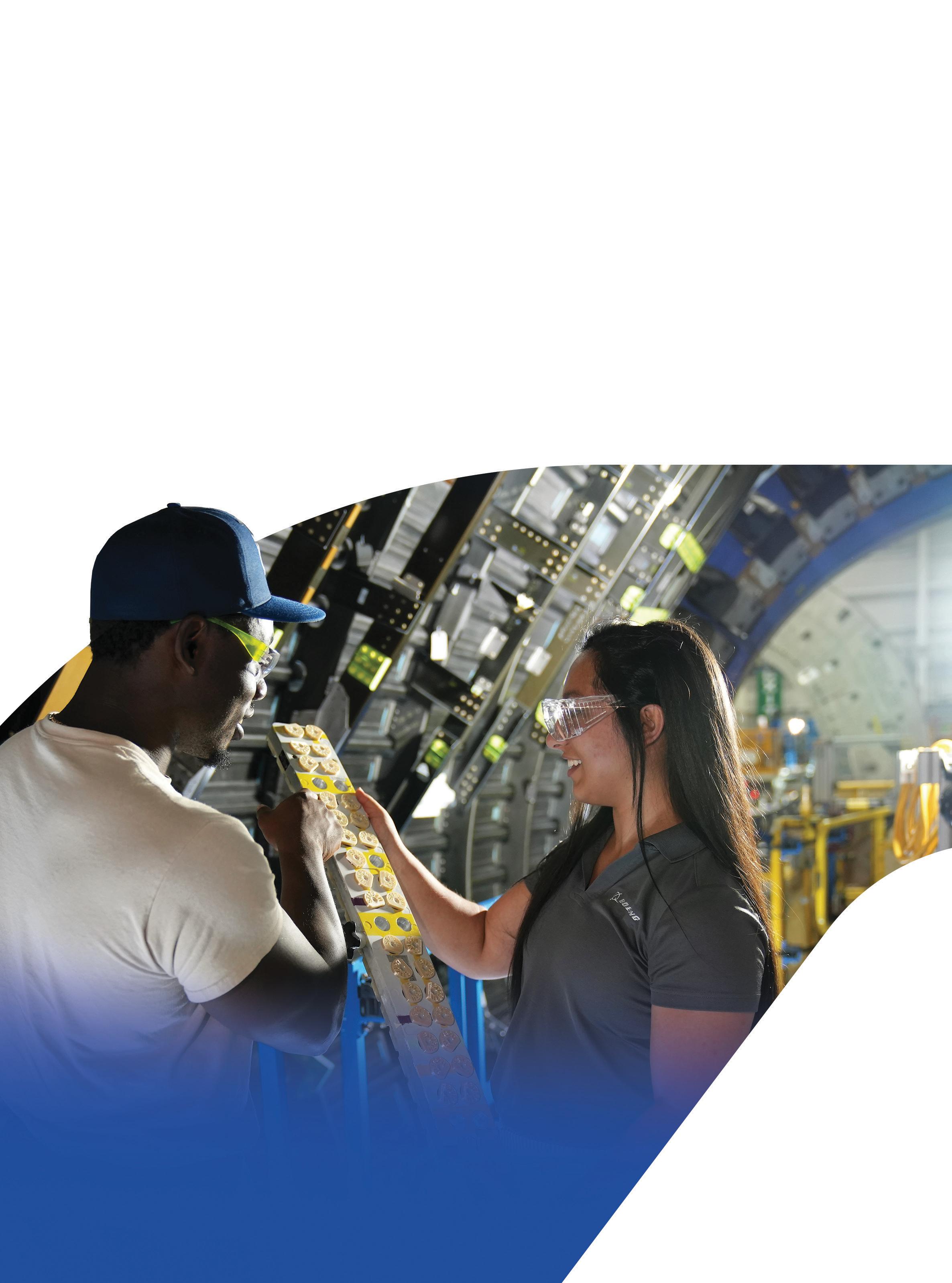
U.S.
Since 1905, the Forest Service, an agency of the U.S. Department of Agriculture, has brought people and communities together to answer the call of conservation.
Make a difference in your community and help steward the Nation’s forests and grasslands through careers in civil engineering, geospatial systems, information technology, and much more!
Scan the QR code or visit fs.usda.gov/workingwith-us/careers to learn more about career opportunities with the Forest Service.

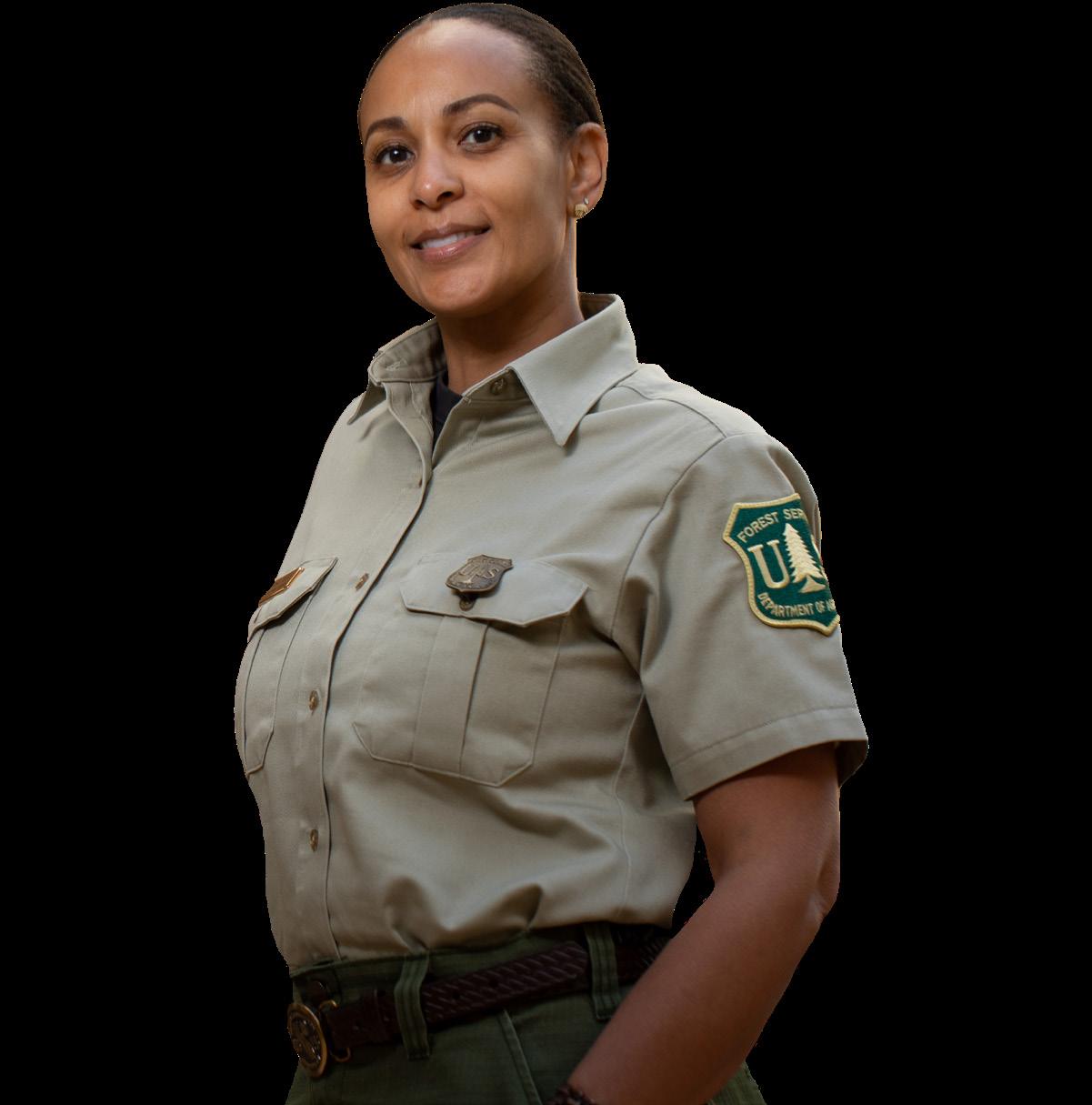
Friday, October 4, 2024 4 p.m. ET
Connect with Forest Service panel members as they share their diverse personal journeys and career experiences as STEM professionals.
Saturday, October 5, 2024
Visit and engage with Forest Service employees at the technology expo to learn more about careers with the Forest Service.



by Lango Deen editors@ccgmag.com


Join us in celebrating the remarkable achievements of ten professionals featured on the cover of Career Communications Group magazines, whose innovations have transformed their fields and industries over the past decade. This showcase highlights their successes and demonstrates how they have paved the way. As we explore their transformative impact, we will spotlight their accomplishments and any hurdles they have overcome. Not only have they excelled in their expertise, but they have also inspired their communities. Let us celebrate their legacy and look forward to a bright future filled with incredible possibilities!


strategic planning. Previously, she was an assistant professor at the University of North Carolina Wilmington, where she specialized in supply chain management and analytics. Her presentations cover a range of topics, including pollution, supply chain disruptions, and sustainability in maritime transportation and fashion supply chains, highlighting her significant contributions to her fields of expertise.
employees. Tracy is a fellow of the American Institute of Aeronautics and Astronautics. He also served as a past chair of the American Society of Mechanical Engineers’ Aerospace Division. Additionally, he sits on the boards of directors for 3D Systems and the Boyle Heights STEM Academy. He serves as an advisor to new ventures, including Swift Health Systems and Modus.
1. A decade after appearing on the cover of Hispanic Engineer magazine as a Ph.D. candidate at Missouri University of Science and Technology, Lizzette Pérez Lespier, PE, still values this feature as a key professional milestone. A thumbnail of the magazine proudly occupies a space in her LinkedIn media assets. Lespier earned her B.S. in industrial engineering from the University of Puerto Rico-Mayagüez Campus, followed by her M.S. and Ph.D. in engineering management from Missouri University of Science and Technology. She has published articles such as "A Model for Evaluating Environmental Impact Indicators in a Sustainable Maritime Transportation System" and "The Contributions of Women to Multimodal Transportation Systems." Lespier has served as an adjunct professor at Rutgers University and as chief operating officer of an LLC, focusing on household management and the well-being of family members through
2. John J. Tracy retired in 2016, after the 100th anniversary of Boeing's founding. He was born in Los Angeles, CA. His father, John Wesley Tracy, worked in human resources at North American Aviation, which was later acquired by Boeing. His mother, Victoria Alegria, was a homemaker. Tracy obtained a bachelor's degree in physics from California State University, Dominguez Hills, in 1976, a master's degree in physics from California State University, Los Angeles, in 1981, and a doctorate in engineering from the University of California, Irvine, in 1987. After spending three years as a high school mathematics teacher in Los Angeles and two years as a physicist at Hercules Aerospace, Tracy joined McDonnell Douglas as an engineer scientist.


Boeing later acquired the company. Tracy developed expertise in innovative vehicle structures and aging aircraft throughout his career. He testified before the Senate and House committees on the industry's competitiveness. He was later appointed as Boeing’s chief technology officer. Additionally, he developed a strategy for over 100,000

3. On Nov. 7, 2024, NVIDIA welcomed Ellen Ochoa to its board of directors. Ochoa is not only a former director of NASA's Johnson Space Center but also a trailblazer as the first Latina astronaut to journey into space. Beyond NVIDIA, Ochoa brings her expertise to other boards, including Service Corporation International, where she chairs the compensation committee and actively participates in the investment committee. She also contributes valuable insights to the board of the Mutual of America Financial Group. In 2013, Ochoa became the first Hispanic person and the second woman to lead NASA's Johnson Space Center. She stepped into the role of deputy director while managing the Astronaut Office. Her journey began in 1993 when she became the first Hispanic woman to travel to space during a nine-day mission aboard the space shuttle Discovery, focused on studying the Earth’s ozone layer. Ochoa is a seasoned space veteran, having accumulated 1,000 hours of experience in space. Her final flight played a crucial role in the assembly of the International Space Station. Ochoa holds a Bachelor of Science degree in physics from
San Diego State University, a master’s degree, and a Ph.D. in electrical engineering from Stanford University.

computer engineering from Ohio State University.

4. Maria Martinez is a retired corporate executive with extensive experience in operations and digital transformation. She most recently served as the Executive Vice President and Chief Operating Officer at Cisco Systems from March 2021 to May 2024. Before that, she was the chief customer experience Officer from April 2018 to March 2021. Before joining Cisco Systems, Martinez held several executive roles at Salesforce, Inc. These included President of Global Customer Success and Latin America from March 2016 to April 2018, President of Sales and Customer Success from February 2013 to March 2016, Executive Vice President and Chief Growth Officer from February 2012 to February 2013, and Executive Vice President, Customers for Life from February 2010 to February 2012. Earlier in her career, she managed Microsoft Corporation's global services business, which encompassed professional services and customer support for all products. Martinez has also held leadership positions at Motorola, Inc., and AT&T Inc., and she served as the Chief Executive Officer of Embrace Networks, Inc. In addition to her corporate roles, she has been a director at several organizations, including The Bank of America Corporation, Tyson Foods, Inc., McKesson, the Computer History Museum, and the Silicon Valley Education Foundation. Martinez holds a bachelor’s degree in electrical engineering from the University of Puerto Rico and a master’s degree in

5. Guillermo Diaz, Jr. has an inspiring journey that began in the U.S. Navy, where he earned a scholarship that led him to a Bachelor of Science in business administration from Regis University. His career took off in the tech industry, where he played pivotal roles in companies like Silicon Graphics. In 2000, he joined Cisco Systems, where he became a key contributor to transforming network infrastructure and business applications. His expertise spans e-commerce, technical services, sales and marketing, customer experience, and cloud and SaaS platforms. As CIO, Diaz spearheaded agile digital transformation efforts. Under his leadership, his team embraced Cisco's digital journey, collaborating closely with clients to support their transformative initiatives. Diaz also played a vital role in fostering diversity as a leader of the Diversity Council and the executive sponsor of Cisco's Hispanic/Latino employee resource network. Beyond Cisco, he has served on the board of an innovative AI and Internet of Things analytics platform. Diaz’s achievements include receiving the 2015 Hispanic IT Executive Council (HITEC) “Estrella of the Year” award and being named the 2014 Best CIO Community Champion by the Silicon Valley Business Journal. From 2009 to 2014, he was celebrated as one of the Top Hispanics in IT, highlighting his influence and commitment to excellence in the technology sector.
6. Rick Piña is a distinguished member of the U.S. Army Signal Regiment
and a recipient of the Signal Corps Regimental Association’s Silver Order of Mercury award. He served as the chief technology advisor (CTA) for the public sector at World Wide Technology (WWT). In this role, his team consisted of former CIOs, CTOs, CISOs, and senior vice presidents who engaged with customers on strategy, innovation, and overall transformation. Piña joined WWT in 2015 after serving in the United States Army for 25 years. His final assignment was as the United States Army CTO and principal technical advisor to the Army CIO. HITEC recognized him as one of the 100 most influential Hispanic leaders in technology. In addition to his professional achievements, Piña serves on the board of directors of the Fort Gordon Historical Museum Society, a nonprofit dedicated to preserving the history of Army communications. He also leads a nonprofit he cofounded with his wife, RIPMinistries, which is focused on serving the underprivileged, with a particular emphasis on the Caribbean. Within WWT, Piña led the Hispanic/Latinx employee resource group, HEARD (Hispanics Embracing Awareness and Racial/Ethnic Diversity).

7. Horacio Rozanski started with Booz Allen in 1991 as a summer intern and a year later joined full-time as a strategy consultant in the company's commercial business. He rose through the ranks, serving as chief personnel officer, chief strategy and talent officer, COO, and president before becoming CEO in 2015 and chairman of the board of directors in 2024. Rozanski has led the transformation of Booz Allen from


a traditional consulting firm to an advanced technology company, driving speed to outcomes for the U.S. federal government. This effort positioned Booz Allen at the center of our nation’s most critical missions and laid the foundation for the company’s sustained growth. In the face of rapid technological change and complex global challenges, Booz Allen is innovating with speed and agility to help our nation respond and thrive. Outside of Booz Allen, Rozanski serves as chairman of the board for Children’s National Hospital and is a member of the board of directors at CARE USA, as well as the Economic Club of Washington, D.C. He is a member of the Business Roundtable and the U.S. Holocaust Memorial Museum’s Committee on Conscience. Rozanski was named to the Horatio Alger Association of Distinguished Americans and received the 2022 Horatio Alger Award.
8. Raúl Marcelo Claure Bedoya is founder and CEO of Claure Group. His entrepreneurial journey began in 1997 when he established Brightstar, a wireless services company that flourished to become the largest Hispanic-owned business in the United States for six years. In 2014, Claure sold Brightstar to Sprint, where he served as president and CEO until 2018 and later as executive chairman until 2020. He played a pivotal role in revitalizing Sprint, guiding the company through a strategic merger with T-Mobile USA. From 2020 to early 2022, Claure served as CEO of SoftBank Group International and COO of SoftBank Group Corporation. He was instrumental


in launching the SoftBank Latin America Fund, a fund that emphasizes supporting entrepreneurs of color. In 2023, while continuing to lead Claure Group, he unveiled a venture capital initiative focused on creating
opportunities in Latin America. He is also enthusiastic about sports, having owned the vibrant football team Club Bolívar and served as chairman and co-owner of Girona FC since 2020. His philanthropy has had a lasting impact, as he helped launch the One Laptop Per Child initiative at Brightstar and initiated the 1Million Project Foundation while at Sprint, both of which focus on enhancing computer access for students.
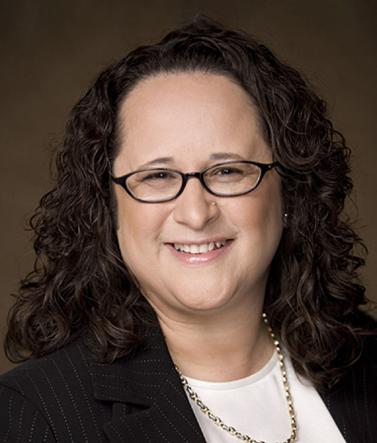
9. Myrna M. Soto is an accomplished professional with experience in information technology and security across various industries, including financial services, hospitality, risk
management, gaming, and entertainment. She has made significant contributions as the vice chairman and an executive committee board member of the Hispanic IT Executive Council and served on the board of trustees at Cabrini College. As the CEO of a boutique advisory firm, she provides expert strategic consulting
services in cyber security, technology integration, and enterprise risk management. Between March 2020 and May 2021, she held the pivotal role of chief strategy and trust officer at a forward-thinking cyber security technology provider. Previously, she excelled as the CEO of Digital Hands. Her expertise extends to serving as a venture advisor for a firm dedicated to empowering early-stage cyber security companies. Her career includes her tenure as senior vice president and global chief information security officer at Comcast. In this influential position, she aligned cyber security strategies and policies, leading security and technology risk management across the vast enterprise. Her leadership ensured that security initiatives were integrated seamlessly into the company's diverse business objectives, effectively protecting information assets and technologies on a global scale.
Other notable professionals on Hispanic Engineer magazine’s cover include Michael Peter Huerta, who embodies perseverance in advancing transportation systems. As the first in his family to graduate from college, his journey is a testament to his dedication and vision. HE

Continue the celebration of 40 years with the Hispanic Engineer Magazine over at www. Hispanicengineer.com
This engaging timeline features significant milestones. It illustrates achievements alongside career-shaping events.
'84 '86 '88 '93 '90 '97 '06 '10 '14 '17 '18 '22 '24 '21 '23
• Franklin R. Chang-Díaz made his first space shuttle mission aboard the Columbia.
• A group of higher education leaders established the Hispanic Association of Colleges and Universities (HACU).
• Hispanic individuals comprised just 7 percent of the STEM workforce in the United States.

• Following Boeing's acquisition of Rockwell's North American division in 1996, McDonnell Douglas merged with Boeing in August 1997.
• Latinos earned 7 percent of undergraduate engineering degrees.
• AISES, the American Indian Science and Engineering Society, celebrated 40 years of supporting Indigenous/Native people in STEM
• Latinos earned 13.6 percent of undergraduate engineering degrees.
• The SHPE-LDC U.S. Latinos in Engineering and Tech Report highlights a 73.6 percent increase in undergraduate engineering enrollment from 2010 to 2021.
• Hispanic or Latino veterans comprise 8 percent of the total U.S. veteran population.
• SACNAS, the Society for Advancement of Chicanos/Hispanics and Native Americans in Science, celebrated its 50th anniversary in 2023.
• Hispanic Engineer magazine was established, later evolving into Hispanic Engineer and Information Technology.
• Apple introduced the Macintosh, the first personal computer to utilize a graphical user interface.
• Hispanic Heritage Week was expanded to a month by President Ronald Reagan.
• Ellen Ochoa became the first Hispanic woman to travel to space, serving as a mission specialist aboard the space shuttle Discovery for STS-56.
• The Hispanic Information Technology Executive Council (HITEC) was founded to connect Hispanic technology professionals with business leaders and decision-makers.
• Booz Allen Hamilton rang in its 100th year with the opening bell at the New York Stock Exchange.
• Hispanic students claimed 11.4 percent of undergraduate engineering degrees, representing a significant increase from 11.1 percent in 2017.
• Hispanic women earned 14.3 percent of engineering bachelor’s degrees during the 2021–2022 academic year, a trend that was also mirrored at both the master’s and doctoral levels.
• Hispanic or Latino individuals represented 9.1 percent of engineers in the U.S.
• The SHPE 50th Anniversary celebration took place, with parties and activities held throughout the year leading up to the SHPE National Convention.
• 2024-2025: Hispanic Engineer magazine celebrates milestone anniversary!


https://checkout.subscriptiongenius.com/ ccgmag.com/
by Lango Deen editors@ccgmag.com
For 40 years, Hispanic Engineer & IT magazine has been at the forefront, showcasing the accomplishments of leaders and professionals in science, technology, engineering, and math (STEM). Our magazine recognizes these individuals who are advancing their fields through innovation, dedication, and leadership, serving as role models for generations to come. This year’s recipients of the Outstanding Achievement Award, profiled here, represent a spectrum of excellence across sectors—from surgical robotics and aerospace to information technology and automotive. These profiles reflect the winners' positions and accomplishments at the time of the award, highlighting why they are individuals to watch.
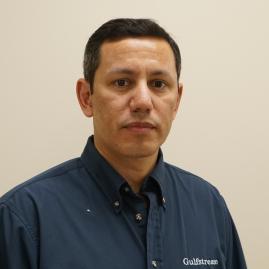
Alejandro Aguilar has been working in the aerospace industry for 19 years.
During this time, he has held various roles, including manufacturing engineer planner, design engineer, structures engineer, and stress engineer. Recently, he has been designated as a candidate to obtain a delegation as an authorized engineering representative or expert for structures within Gulfstream Aerospace. Aguilar earned a bachelor's degree in mechanical engineering from Universidad Autonoma de Baja California. He also has Gulfstream certifications and is a key player within the Mexicali engineering team.

science and electronic engineering from ITT Technical Institute and a Bachelor of Science degree in business administration with a focus on technology management from Davenport University. He earned an M.B.A. from Kettering University in 2020.
Nestor Aponte is an automation supervisor at General Motors (GM). He has consistently developed creative solutions to enhance operations. One notable example is his ability to provide alternative approaches to upgrading metal stamping equipment. Aponte earned an associate degree in computer
Francisco Banda is a technical specialist engineer in the Aircraft Engineering Department. He has been working in the aerospace industry for the last 25 years, during which he has held



various roles. In 2024, he obtained an engineering approver certification. A technical expert in all electrical disciplines, he provides support for design engineering, repairs, and other engineering investigations. With his recent accreditation, he will review and approve all minor workflow changes for the G500, G600, and G700 models submitted by the Mexicali engineering team. Banda has a bachelor’s degree in electronic engineering from the Universidad Autónoma de Baja California.

Perla Barajas implemented change and navigated challenges and wins as the company transitioned from Continental Automotive to Vitesco Technologies. As a production manager, she supports the production of automotive products for Ford Motor Company and General Motors. She also coaches and hires employees and oversees supervisors.
In 2011, Barajas earned a bachelor’s degree in engineering quality and productivity from the Universidad Regional del Norte. She has been a successful participant in internal professional development programs, including the Vitesco Leadership Development program, as well as people management leadership programs and global supply chain innovation initiatives at the University of Michigan's Ross School of Business.
Cindy Bermudez is an industrial engineer at Gulfstream Aerospace. She earned a bachelor's degree in industrial engineering in 2007 from the Mexicali Institute of Technology and an M.B.A. in 2016 from Centro de Enseñanza Técnica y Superior (CETYS) Universidad in Mexicali. Bermudez is recognized for
supporting the professional development of early-career engineers and helping team members acquire the skills necessary to drive innovation in Z frames, machining, warehouse operations, cabinets, assemblies, project planning, and project execution.
Gala Burboa is a stress engineer in the Aircraft Engineering Department. She has been working in the aerospace industry for the last eight years. Burboa holds a bachelor’s degree in aerospace engineering from the Universidad Autónoma de Baja California. She has been a key player in training new engineers. Her responsibilities include approving workflows from a stress standpoint, creating finite element models and postprocessing models, analyzing data, and creating stress reports and structural substantiation reports required for aircraft certification. She has a strong background in design, encompassing both electrical and mechanical disciplines, as well as stress engineering and certification.
Fabián Calderón is a maintenance reliability engineer. He has served as a specialist in engineering, technical, project, and leading activities at Gulfstream Mexicali for the last 17 years.


that parts, repairs, and purchasing requirements for devices are up to date. She also processes documentation associated with repair items and warranty claims, manages inventory, and updates data to coordinate logistics support between campuses. She has earned patents for developing tools to enhance the efficiency of simulator operations inventory. A supply chain specialist with over 22 years of experience in simulator operations, supply chain management, and logistics, she graduated from the University of Nuestra Señora de la Mercedes in Bogotá, Colombia, with an associate degree in graphic design and marketing. She also holds certifications in shipping hazardous materials, quality assurance, lean fundamentals, program management, and best practices.

Calderón is a strong proponent of reliability strategies in his department and has been working with PowerBi and Microsoft Forms metrics to facilitate analysis. He earned a bachelor's degree in mechanical engineering from the Mexicali Institute of Technology and a master’s degree in industrial systems and processes from CETYS Universidad.
Angela Liliana Cardenas is in supply chain management for simulator operations. In this role, she ensures
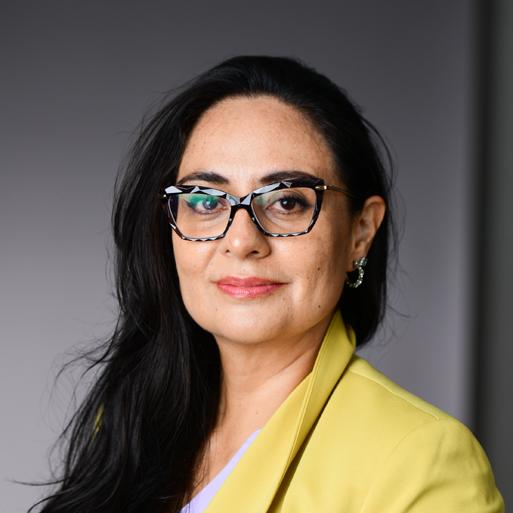
Paola Martinez Chavez is a quality engineer responsible for quality control and quality improvements in the cabinet business unit at Gulfstream Aerospace. She earned an industrial engineering degree from CETYS Universidad and began working at Gulfstream five years ago, initially as a student in the quality department. She has been a crucial member in solving problems in her department.
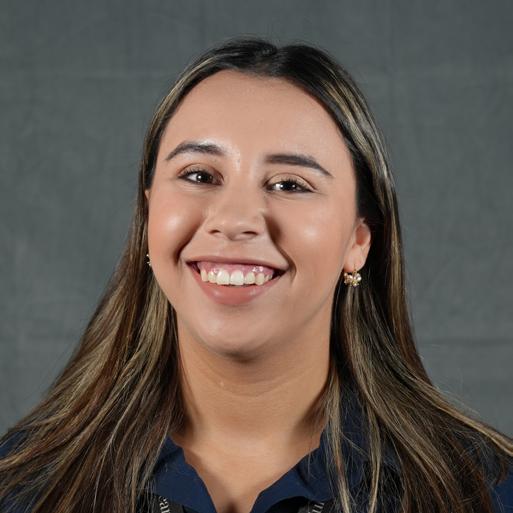
Doris Concepcion is the vice president and controller at UL Research Institutes and UL Standards



& Engagement. Since 2022, she has led the implementation of an enterprise resource planning tool and overseen the on-time and under-budget construction of a new hospital with a capital budget exceeding $800 million. Her leadership has been pivotal in preparing and presenting financial reports to the board, implementing internal controls, and ensuring compliance with audit standards and regulations. She earned a bachelor’s degree in accounting and business management from Robert Morris University in Illinois and an M.B.A. from National Louis University in Chicago, IL.
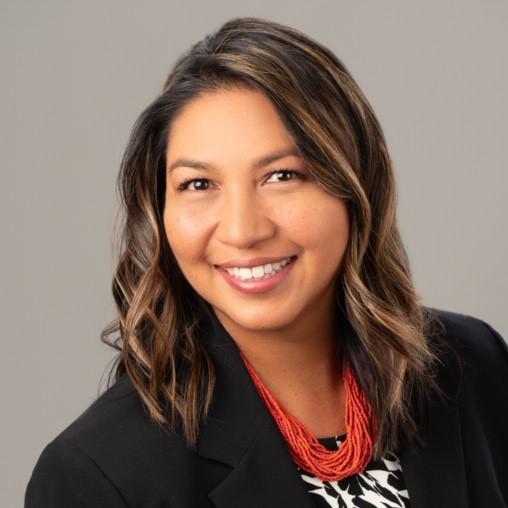

Filiberto Correa is an industrial engineer who has worked in operations since 2017 at Gulfstream Mexicali. His core competencies include efficiency improvements, project coordination, learning agility, procedure improvements, and the transfer of new products. As a leader, he embodies the organization's values through outstanding performance, prioritizing people, and fostering continuous improvement. He earned a bachelor's degree in industrial engineering from The Autonomous University of Baja California.
Magaly Cruz earned a bachelor's degree from the Massachusetts Institute of Technology in 1997 and has been working as a systems engineer since
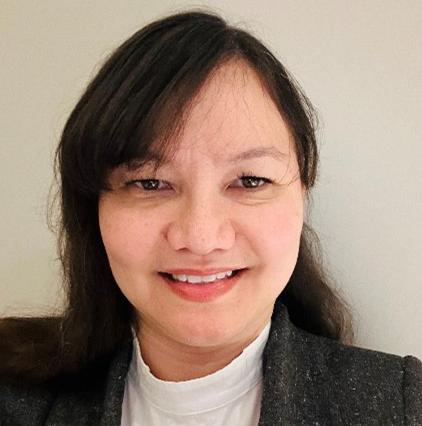
then. She is an industry expert with over 26 years of experience in aerospace engineering. Cruz is a subject matter expert in tool development, particularly in the onboard performance tool, which calculates takeoff and landing performance and considers complex customer policies, regulatory restrictions, and aircraft variations. She applies her performance engineering knowledge by leading across-the-lifecycle design, development, and organization support. She is part of the standard computerized performance working group.
RaiAnne Cruz's 28-year career has spanned telecommunications, pharmaceutical, and chemical distribution industries. She is a critical member of Corning's optical communications division, responsible for defining and executing the supply chain strategy for ribbon cables. Over the next four years, the execution of this strategy is projected to deliver growth across four locations and introduce products that constitute 32 percent of the product line. Cruz earned a Bachelor of Science degree in chemical engineering from the University of Washington in Seattle.
Xenia G. Diaz has been a Project Management Office systems and support manager since 2019. Previously, she served as the manufacturing manager in Abbott's Molecular Diagnostics Division. Other positions she has held since graduating from Abbott's select Engineering Professional Development Program in 2006 include senior quality validation engineer and process development engineer. In addition to her bachelor's degree in chemical engineering from the University of Illinois at
Urbana-Champaign, Diaz has certifications in corrective and preventive actions (CAPA) quality management systems, project cost/schedule risk analysis, process development engineering, statistical process control, project management, and Lean/Kaizen Green Belt Six Sigma.
Alex Rivera-Diaz is a systems integration lead engineer with General Dynamics Information Technology. He earned a bachelor's degree from Excelsior College in Albany, NY, and an M.B.A. from Trinity International University. As an integrated mission command information system trainer and operator, he has a proven ability to advise and assist supervisors on critical decisions involving command and control. Mission command information system trainers/operators work in support of the Army’s mission command events and exercises, including planning, configuration, testing, integration, and execution support to configure and operate all systems, including Advanced Field Artillery Tactical Data System, Air and Missile Defense Workstation, Tactical Air Integration System, Air Defense Systems Integrator, Blue Force Tracking, Global Command, and Control System— Army.


Julio Cesar Dubi started working at Gulfstream Aerospace in 2008 as a mechanic. In 2016, he earned a bachelor's degree in manufacturing engineering from the Universidad Polytechnic de Baja California and subsequently advanced his



career by supporting critical areas in the quality department. Now, he is the quality engineer in charge of administration. As a quality engineer, his primary job function is serving as a quality control inspection planning specialist for business units.
Francisco “Frank” Escalante is a lead systems engineer at Parsons, Inc. He attended the University of Maryland in College Park, where he obtained a Bachelor of Arts in criminology and criminal justice. After graduation, he worked in a high-intensity area of drug trafficking, where he assisted the Drug
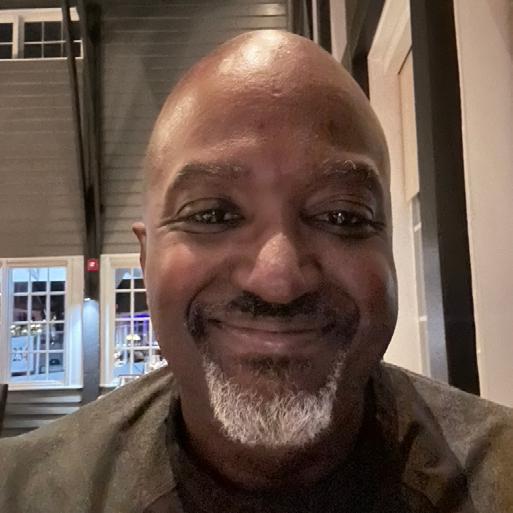
Enforcement
Administration and gained experience with emerging technologies. He continued to explore cyber threats and risk intelligence through a master’s degree in information systems at the University of Maryland Global Campus, with a focus on information assurance. Once he graduated, he spent the next 20 years of his career identifying and managing risks and threats to information systems and enterprises.
the University of San Diego. As an industrial engineer, her primary role is to support the implementation of operational excellence at a local site, achieving business results through the application of Lean and Six Sigma systems. In 2020, she received the Abbott Divisional Vice President Award for her improvements in forward shaft lean. Garcia also participated in the Abbott Vascular Global Citizen Development Program in 2023, demonstrating her commitment to ongoing professional development.
Ramiro Gaspar began his career as a quality engineer overseeing projects that are still ongoing at the Mexicali facility. An industrial engineering graduate from the Universidad Autónoma de Baja California, he has developed expertise in quality assurance, quality control, and, most recently, as an operations leader in the machining center, where he is responsible for hardware installations. He has implemented several initiatives, including training painters to arrive on time, assigning mechanics to prioritize the most urgent work orders and minimizing the impact on customers, encouraging mechanics to conduct selfaudits of their areas, and enhancing the efficiency of paint rooms through a new racking system.

Jasmine Garcia is a first-generation college graduate with a Bachelor of Science degree in industrial engineering from
Universidad Politecnica de Baja California in 2020 and is currently pursuing postgraduate studies at CETYS Universidad.
Carlos Ibarra has achieved high performance in the aerospace manufacturing industry since he earned a bachelor's degree in industrial engineering from CETYS Universidad in 2021. He also earned a Master of Business Administration from CETYS in 2022. As an earlycareer professional, Ibarra has quickly made his mark as a training compliance auditor and specialist at Gulfstream Aerospace. He supports instructors in achieving their goals and implementing new initiatives.

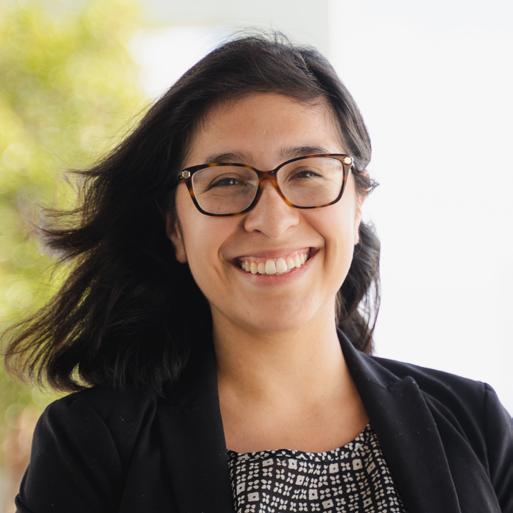
Alejandro Godínez is a reliability and maintenance engineer at Gulfstream Mexicali. He is a key member of the team in achieving departmental goals and implementing technology in various areas, including reliability, scheduling, and planning. Safety and quality are top priorities for projects, and he has fostered this culture within the maintenance department. He graduated from the
Antonio Maraj is a senior network engineer in General Dynamics Information Technology's defense, air, and space sector. Since joining GDIT in 2016, he has progressed from being a network engineer responsible for operating and maintaining equipment and software devices at a military base to overseeing and managing advanced network operations and providing support to the warfighter across regional operations and areas of responsibility. His technical expertise led to a crossservice solution that improved information sharing and operational processes. In 2020, GDIT recognized the outstanding contributions and leadership of its engineers with the GDIT Engineer of the Month Award.




Karenda Mella is the senior director of site operations and global systems services. She is a skilled engineer who has won engineering excellence awards. She has over 15 years of experience in manufacturing, with management and budgetary responsibilities. She has served in various roles, including compliance engineer, building engineer, lead compliance engineer, production engineer, and process support engineer. Since January 2023, she has served as senior director at the headquarters campus of a leading global medical devices company. Her
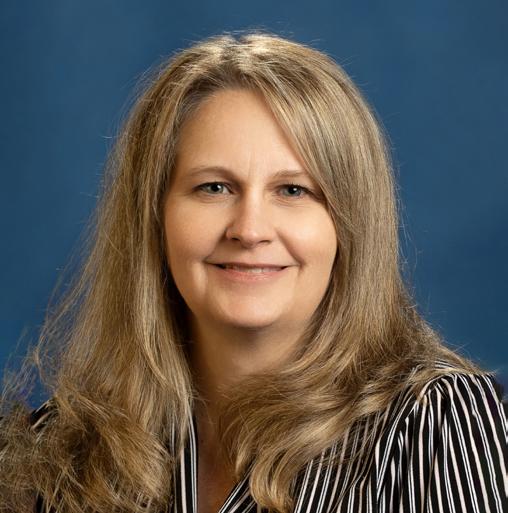
responsibilities include facility management and corporate metrology administration. She earned an associate's degree in engineering in 1991 from Jefferson College in Missouri, followed by a bachelor’s degree in chemical engineering from the University of MissouriRolla in 1994.

Brandon Mendoza is an electrical planning engineer at the Gulfstream Aerospace Mexicali site. Since 2019, he has held various roles within the company, focusing on the manufacturing planning engineer process in electrical areas. He has supported shop floor electrical harnesses
in avionics and electrical assemblies to produce the G700, G600, and G500 models. Mendoza is committed to developing his coworkers in the sustaining G700 team. He graduated from the Universidad Autónoma de Baja California with a degree in industrial engineering in 2017.
Julissa Monroe is a human resources and talent acquisition leader with more than 25 years of experience in leadership roles, customer service, operations, and marketing. She earned a bachelor’s degree in business management from Ottawa University in Phoenix, AZ, and an M.B.A. from Park University in Gilbert, AZ. She is currently responsible for attracting and engaging talent, as well as collaborating with stakeholders across the enterprise to ensure the alignment of recruitment initiatives. Before Boeing, she worked for Verizon as an associate director of talent acquisition for over a decade.

statistics with a concentration in biostatistics from the University of Virginia. Since then, she has made a remarkable journey from R coding to data engineering. Nakamoto is an early adopter of building web apps with R in Shiny, a web application framework for R that simplifies and streamlines the creation of web applications with data visualizations. Nakamoto transformed Booz Allen's analytics capabilities and revolutionized the delivery of insights to clients. As a data engineer, she pioneered her work within a community space focused on Department of the Navy data, users, and unique problems.

Gregorio Morales has over 10 years of experience in manufacturing processes and managing maintenance systems. Additionally, he earned a bachelor's degree in mechatronic engineering from the Universidad Autonoma de Baja California and holds certifications in Total Productive Maintenance and Lean Six Sigma Yellow Belt, which provide foundational knowledge in process improvement principles and tools, enabling him to contribute to process improvement initiatives.
Julia Nakamoto earned a Bachelor of Science degree in interdisciplinary
Pedro Padilla has been working at Gulfstream Mexicali for six years. He has worked on key projects in the maintenance department, giving support to five businesses as a maintenance engineer. He also teaches technicians to analyze failures and establish equipment, assigning them responsibility for preventive maintenance. He earned an industrial engineering degree from Instituto Tecnologica de Sonora.
Abraham de la Paz is a clinical strategy and informatics lead at The MITRE Corporation. He earned a bachelor’s degree in respiratory care from Shenandoah
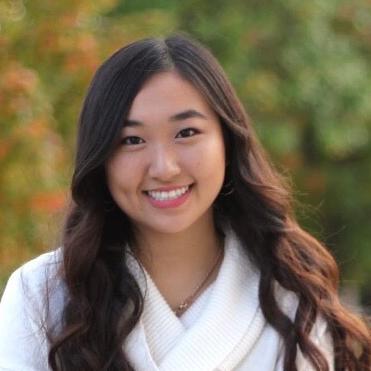




University and a postgraduate degree in health informatics administration from the University of Maryland Global Campus. At Johns Hopkins Hospital, he co-led a critical research project on mechanical ventilator alarms. Building on that foundation, he transitioned into the field of health informatics. He oversaw the planning, development, implementation, and evaluation of health IT systems that streamlined clinical processes and enhanced patient outcomes across 40 hospital-based community clinics.
Raquel Oliva is a training device technician at Boeing. She earned a bachelor’s degree in applied science with a focus on supervision and management from Miami Dade College and a master's degree in uncrewed and autonomous systems from Embry-Riddle. She has 18 years of experience in aircraft maintenance, including skills in maintaining aircraft flight simulators as a technical training device. Her certifications include a Remote Pilot/ Minor Unmanned Aircraft System license, Air Traffic Control Collegiate Training Initiative, Aircraft Maintenance Technician, Airframe and Powerplant license, and certifications from the Association of Uncrewed Vehicle Systems International, as well as Trusted Operator Pilot Level 1 and 2 certifications.

Lafayette. Pereira's achievements are particularly evident in his pivotal contributions to the development of high-quality COVID-19 test kits. Furthermore, his leadership was pivotal in pioneering robust sterilization methodologies for medical devices, demonstrating his expertise in understanding the chemical properties and their profound implications for product integrity.

(38 percent). In addition to empowering her team, Pérez has experience in product support, shop floor support, and supplier audits.
Aricson Pereira is a staff engineer responsible for launching surgical robots and setting up advanced manufacturing facilities. He earned a bachelor’s degree in chemical engineering from the University of Pune in India and a master’s degree in chemical engineering from the University of Louisiana at

Benneth Pérez is a wire harness design and installation engineer. He earned a bachelor’s degree in mechanical engineering from the University of Texas at San Antonio and a master’s degree in aerospace engineering from the University of Central Florida. Pérez supports PhantomWorks and the FA-18 Air Dominance platform. He also supports the electromechanical design installation of the most advanced electronic warfare on the U.S. Navy’s F/A-18 and Super Hornet aircraft. Pérez joined Boeing in 2019, helping maintain the C-17 Globemaster III. He is leading a project on advancement and hiring strategy to understand better how to attract, retain, and connect talent with industry needs.
Brenda Pérez graduated from Universidad de Autonoma de Baja California with a bachelor's degree in renewable energy. She is a quality engineer at Gulfstream Mexicali. Pérez has gained recognition for her significant contributions to various projects focused on supplier quality. These projects have consistently achieved outstanding results in 2022 (36 percent), 2023 (10 percent), and 2024
Marco Pichardo is a quality leader with expertise in areas such as electrical and sheet metal. He graduated from the Universidad Autónoma de Baja California in 2012 with a Bachelor of Science degree in mechanical engineering. In 2014, he earned a certification as an internal auditor of quality management systems. Since then, he has earned a Green Belt certification in Six Sigma, as well as postgraduate certificates in electronics, fiber optics, and project management.


Diana Pineda is a chief modeling and simulation engineer with Science Applications International Corporation (SAIC). Early in her career, she worked at SAIC to support the Systems Test and Evaluation Planning Analysis Laboratory, which served the Missile Defense Agency. Pineda rejoined SAIC in 2019 as a principal software systems engineer supporting the Pilot Training Next program. She earned a bachelor’s degree in engineering physics from Embry-Riddle Aeronautical University and a master’s degree in engineering management from the University of Central Florida. She is a certified professional in



modeling and simulation.
Dary Candelario Quintana is a quality lead engineer with over 19 years of experience in the medical device industry. She has demonstrated technical expertise and a commitment to delivering high-quality solutions in the field of medical device engineering. Her diligence has significantly contributed to the project's success. She is an exceptional lead engineer whose contributions have enhanced Abbott's mission of improving patient care through innovation and medical devices. Among her most recent

achievements are implementing interim temperature monitoring systems in several areas and collaborating with submission and post-approval activities of repair products. Additionally, she has facilitated the creation of test-method validations, product performance qualification, and expert validation reports.
Ruben Ramirez has played a pivotal role in key initiatives within the avionics business unit and the electrical sector, consistently exceeding the responsibilities of his position to meet expectations. He designed and implemented a new method to monitor and control the hours employees charge per aircraft, standardizing procedures and activities. As a result, there was a 15 percent reduction in hours worked across
all models during the second shift. Additionally, he standardized checklists for managing calibrated tools on the shop floor and provided coaching and training for new leaders. With nine years of experience in aerospace engineering and two years in the medical and electronics industries, Ramirez has significantly improved productivity while ensuring compliance with quality standards for both customers and the company. He has designed production areas, applied productivity improvement methodologies, practiced lean manufacturing, and implemented ISO standards and Lean Six Sigma tools. He holds a degree in industrial engineering from Universidad Autónoma de Baja California.
Maria Reyes earned a Bachelor of Science degree and a Master of Science degree in civil engineering from Arizona State University. She also has a master's degree in public administration from Harvard University. Early in her career, she served as a consulting engineer and was the CEO of a small business. In 2019, Reyes was inducted into the President's Circle of Distinction by the Arizona Association for Career and Technical Education (ACTE). The ACTE is the nation’s largest association dedicated to advancing education that prepares youth and adults for successful careers.

manufacturing and delivered improvements in product transfers to the Abbott Vascular Puerto Rico site, as well as capital equipment installation, which was necessary to support longrange planning. Also, Rivera has been instrumental in mentoring new engineers. She has 21 years of experience across manufacturing engineering, quality engineering, quality compliance, validation, and facilities engineering. Rivera earned a bachelor's degree in industrial engineering from the University of Puerto Rico's Mayagüez campus in 1998 and an M.B.A. in operations management from the University of Puerto Rico's Rio Piedras Campus.
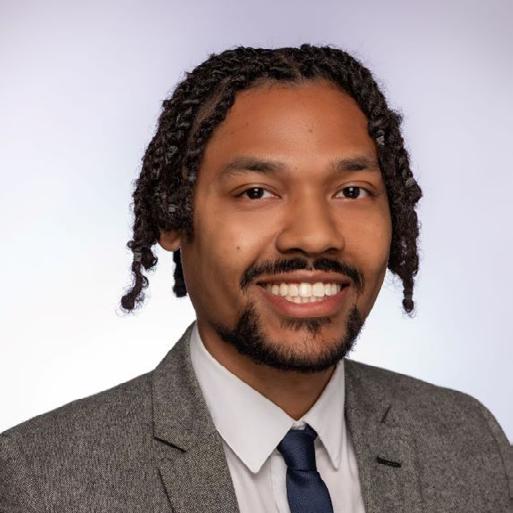

In her current role as workforce innovation and development manager, Reyes fosters innovation in Google's data centers.
Xiomara Rivera is the manufacturing engineering manager for Abbott Vascular. She has significantly contributed to resolving challenges in guide wire

Dennis Sanchez is on his way to becoming a system engineering integrated project team leader, space vehicle project manager, or chief engineer for future programs at Northrop Grumman. Sanchez joined Northrop Grumman in 2013, following his graduation with a bachelor’s degree in aerospace engineering from the University of Maryland at College Park. Since then, his journey has been marked by pivotal roles in program proposals, system requirement and architecture definition, mission analysis, verification planning, hardware integration and testing, and the launch and operation of space systems. He has also demonstrated commitment by


earning a Master of Engineering degree in systems engineering from Penn State and assuming roles as a subject matter expert in space vehicle systems. Sanchez helps his section members develop career growth plans. He has also led various intern activities to help retain the next generation of Northrop Grumman engineers, including providing resources and intern competitions.
Elizabeth Torres is a non-metallic material and process engineer with Bell Textron. She earned a master’s degree in material science from the University of California, Los Angeles, in 2023. The executive staff has identified her as an employee with high potential to become a technical expert. Torres has been a standout since an internship during the summer of 2017. In a previous supplier quality engineering role, Torres became a subject matter expert, supporting over 30 suppliers across the U.S. in addressing technical issues while ensuring Bell Textron's engineering requirements and qualifications were met. She mentored new engineers and developed efficient best practices that her teammates followed. Torres is an alum of Texas Christian University with a bachelor's degree in mechanical engineering. She is a member of the Bell Education Committee and a volunteer with BEST Robotics.
to central Arizona with her parents as a child. In 2018, she began her career with Actalent as a contributor to the customer support group within the Distribution Engineering practice. In 2020, she transitioned to the GIS group, where she acquired technical skills for mapping electric utility distribution facilities, earning a promotion in 2022.

Actalent GIS technicians are skilled in creating and interpreting maps, developing custom software and applications, and managing geographic data.
Ivania Verduzco graduated with a degree in industrial engineering from Universidad Autonoma de Baja California in 2007.

She has worked at Gulfstream for 17 years, providing support to produce various models, including the G500, G600, G800, G700, and G400. She collaborates with the Savannah unit to identify potential risks associated with the transfer of over 9,000 parts. Additionally, she engaged in full-time testing in Mexicali, where programs were created to produce 4-axis and 3-axis parts, yielding promising results for those part numbers. In recent years, she has provided support to the machining area, sharing all the best practices and experiences she has gained throughout her years in NC programming.

Karla Velásquez leads a team of GIS technicians. She embodies development for herself and team members in GIS Mapping. Karla grew up in Mexico City before moving
The 2025 Innovator Watchlist highlights a dynamic group of professionals making significant strides across science, technology, engineering, and mathematics. Their work spans industries—from aerospace and automotive to healthcare, logistics,
and defense—and demonstrates a shared commitment to problemsolving, innovation, and continuous improvement. These leaders and rising stars are transforming ideas into real-world impact: streamlining complex operations, designing advanced systems, leading highstakes projects, and mentoring the next wave of engineers and technologists. Each profile reflects a unique story of persistence, expertise, and a drive to push boundaries. Whether pioneering new manufacturing methods, optimizing mission-critical software, or leading multimillion-dollar infrastructure initiatives, these individuals exemplify what it means to lead with purpose and vision. Their influence can be seen not just in technical outcomes but also in the collaborative culture they help foster within their teams and organizations. As we look ahead, their contributions will continue to shape the evolving landscape of STEM. This list is a reminder that innovation is powered by people—those who are curious, capable, and committed to excellence. Keep an eye on these standout professionals as they chart bold paths toward the future. Their work is only just beginning, and the possibilities ahead are limitless. HE

Did you enjoy this story?
You can find the latest STEM news daily at www.HispanicEngineer.com



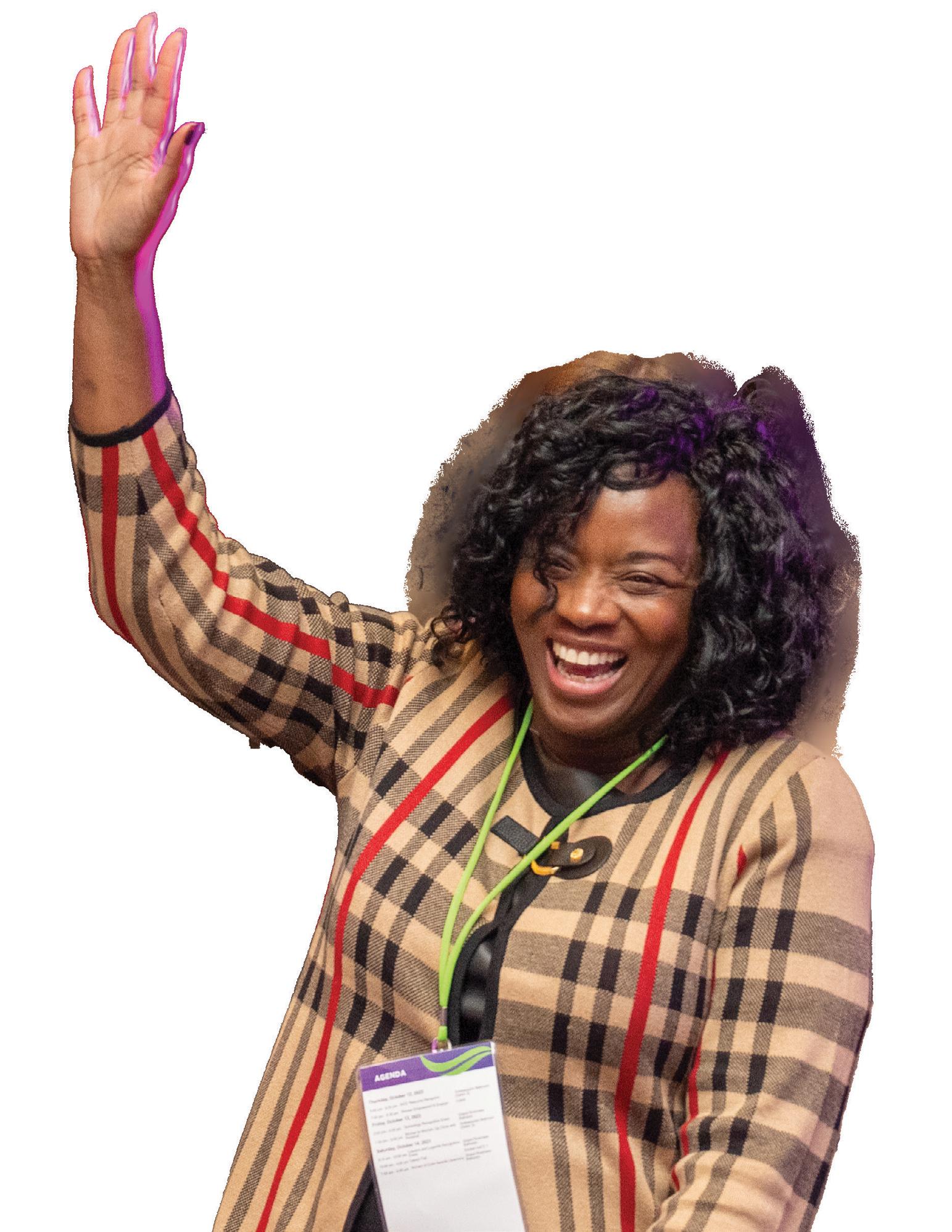





About 12% of the U.S. population is African American yet just over 5% of engineering professionals are African




by Lango Deen editors@ccgmag.com
“Our magazine honors brilliant scientists, engineers, entrepreneurs, and corporate leaders who are shaping the future.”

sAwe celebrate Hispanic Engineer & IT magazine's 40th anniversary, we acknowledge the publication's profound impact on innovation, thought leadership, and representation in the fields of science, technology, engineering, and math (STEM). We’re excited to revisit notable articles that profile influential pioneers who have left an indelible mark on their fields.
The features include candid interviews with trailblazers and insightful discussions on advancements and emerging trends. Our magazine honors brilliant scientists, engineers, entrepreneurs, and corporate leaders who are shaping the future, often leading the charge long before trends take the spotlight. We gain insights into the impactful leadership of innovative organizations through captivating interviews, revealing the dynamic contributions of Hispanics to STEM fields, including their contributions to reports such as "Hispanics in Engineering" and "Hispanics in STEM Education." These reports illuminate the progress and increased representation of Hispanics in these vital sectors.
Data General Corporation was a trailblazer in the minicomputer industry. Founded by the visionary Edson D. de Castro, the company was recognized as a top innovator when de Castro graced the cover of a 1984 issue of Hispanic Engineer magazine. Under de Castro, Data General developed a line of computers that defined the minicomputer market. Thanks to innovation, these computers evolved to a size that could fit into a 19-inch rack. His later endeavors focused

on creating an affordable design, leading to the highly acclaimed Nova series of computers. In the Hispanic Engineer interview, de Castro shared his thoughts on the evolution of electronics, the connections between technology and business, and maximizing the benefits of both. He emphasized the importance of the courage to take risks and adapt management styles to the changing landscape. De Castro observed that many traditional industries were awakening to the potential of technology, realizing its importance in boosting innovation and productivity.
"Some of our older-line industries may have been dormant for a while, but now they're wide awake," he reflected.
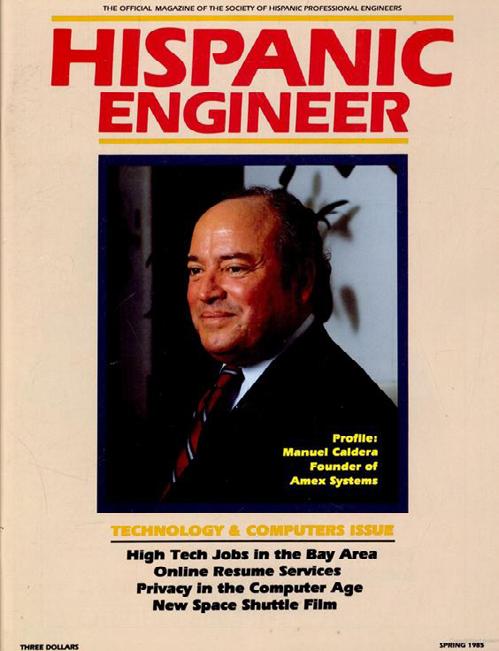
Manuel Caldera, founder and CEO of Amex Systems, was also featured in the magazine’s corporate profiles. Caldera grew his startup from scratch to a high-tech corporation listed as one of the largest Hispanic-owned tech firms in the 1980s. After 14 years of providing hundreds of jobs in the aerospace industry supplier space, he earned the status of a folk hero. Caldera said he adamantly believed the United States needed to focus on Latin America. "There's no way that we could move out of Mexico or Central America without it affecting us," he told Hispanic Engineer
magazine in the spring of 1985.

Ricardo B. Jacquez was the first academic dean to appear on the cover of Hispanic Engineer. He spent over three decades at New Mexico State University (NMSU) in various roles, including professor, department head, associate provost, and dean. Jacquez was the first in his family to go to college. He earned a bachelor’s and master’s degree in civil engineering at NMSU. With the encouragement and support of his family and mentors, he earned a Ph.D. at Virginia Tech. He served as an advisor for the Society of Hispanic Professional Engineers student chapter at NMSU and founding director of the National Science Foundation’s (NSF) Louis Stokes New Mexico Alliance for Minority Participation program, which helps improve the graduation rates of underrepresented students in STEM. In 2007, President George W. Bush and the NSF honored Jacquez with the Presidential Award for Excellence in Science, Mathematics, and Engineering Mentoring—one of his many awards. In 2012, the Association of Public and Land-Grant Universities Commission on Access, Diversity, and Excellence honored his contributions to increasing diversity and access in higher education.
Rodrigo "Rod" Garcia, cofounder of the Society of Hispanic Professional Engineers (SHPE), made the cover of Hispanic Engineer for the first time in the summer of 1987. Garcia’s energy and direction as SHPE's first president had helped build the group 16 years prior into what was even then the most prominent organization.
"I realized that power is not just in an organization," he said in the 1987 issue of Hispanic Engineer magazine. I knew the only way the Society could grow in influence was by building a power base of members with financial means.
Like many significant historical moments, the story of Garcia and city engineers— Alex Vidaurazaga, Andres Santamaria, Americo Garza, and George Esquer—has often been told.
“It’s still worth telling because SHPE continues to make a difference in empowering the Hispanic community to realize its fullest potential and to impact the world through STEM awareness, access, support, and development,” Garcia told Hispanic Engineer in 2019.


That fall, Hispanic Engineer magazine marked Hispanic Heritage Month with a wide-ranging interview featuring Garcia. Over 25 years after his first HE cover story, we rediscovered how SHPE was founded in Los Angeles in the 1970s and how the organization established student chapters that would grow rapidly around the United States.
Born in Barranquilla, Colombia, and raised in Argentina, Adriana Ocampo's family moved to Pasadena, CA, when she was 15 years old. In 1987, she told Hispanic Engineer magazine that while the journey represented a significant trek for the Ocampo family, she hoped it was just the first stop on a trip that would someday take her into space as a planetary geologist. As a little girl, she would often go to the roof of her house and gaze at the stars. She would also create a “spacecraft” using pots and pans from her mother’s kitchen and dress her doll up as an astronaut, with her dog, Taurus, as her copilot.
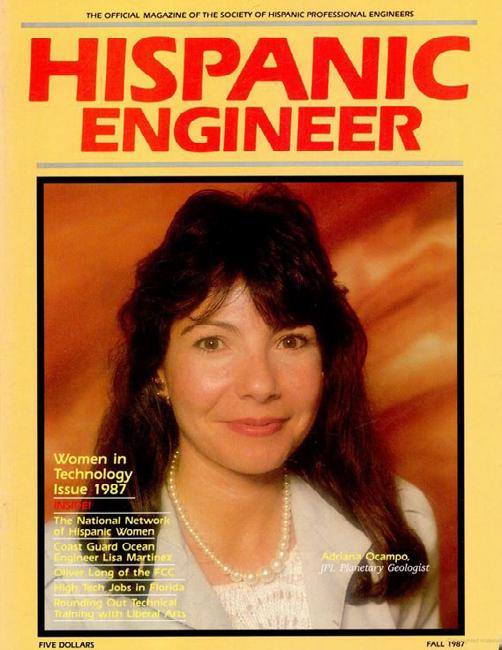
If I had remained in Argentina, pursuing a career in planetary science would have been significantly more challenging, as my test scores suggested that I should focus on business courses. I didn’t like it,” she told Hispanic Engineer magazine. She volunteered at NASA’s Jet Propulsion Laboratory (JPL) due to academic freedom in California and the Space Exploration Post 509, sponsored by JPL. Then, she worked there as an employee during the summer. As she began college and continued working at JPL, she majored in geology at California State University, Los Angeles, earning a Bachelor of Science degree in 1983. She then got her Master of Science in planetary geology from California State University, Northridge. She received both her degrees while working full-time at JPL as a research scientist. Her research led to the discovery of a crater that caused the extinction of more than 50 percent of the Earth’s species, including the dinosaurs. Ocampo has also worked
on Project Galileo, one of the most complex missions flown by NASA since
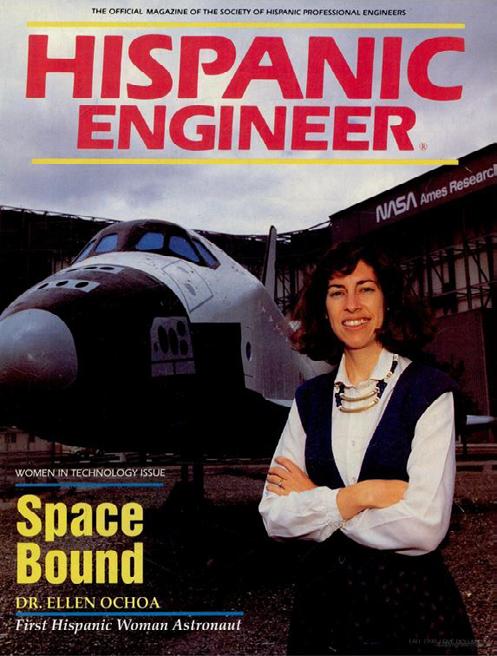
the Viking mission to Mars.
“There are many things in solar physics which could be taking place. A tremendous amount of talent is not being utilized to its fullest potential,” she said in 1987.
“We need to pay more attention, for example, to our sun. There is a lot we don’t know about it. We need to study asteroids and comets, which, in the long run, will help us to develop and place space stations. And we must go to the moon to establish a colony.”
In 1987, the prospect of NASA launching the Parker Solar Probe seemed like an ambitious dream. Fast forward to 2018, and that dream became a stunning reality as the spacecraft embarked on its mission, sending back a treasure trove of data during its perihelion passes—the moments when it gets closest to the Sun. Its state-of-the-art scientific instruments are actively measuring various phenomena, including solar wind plasma, electric and magnetic fields, and the


fascinating structures of the Sun’s outer atmosphere, known as the corona.
In an exciting update in December 2024, NASA's Sun and Space team jubilantly announced on social media that the Parker Solar Probe had made its closest approach to the Sun yet! Nicola Fox, associate administrator of NASA's Science Mission Directorate, shared an exhilarating video, emphasizing, "The Parker Solar Probe has achieved what we set out to do. It is now flying closer to a star than ever before!"
By the end of December 2024, the mission team had completed all necessary operations, including 21 flawless orbits. The spacecraft now stands a remarkable 3.8 million miles from the Sun’s surface, setting groundbreaking records and deepening our understanding of solar phenomena.
Four astronauts will fly around the moon and back in April 2026. The first crewed mission to land on the moon in over 50 years is planned for at least mid-2027.
Ellen Ochoa, the first woman of Hispanic descent to serve as a NASA astronaut, was featured on the cover of Hispanic Engineer magazine’s 1989 Women in

Technology edition. Like Ocampo, Ochoa also paved her way to the stars. She was a branch chief of the Intelligence Systems Technology Branch at NASA Ames Research Center when she was selected as an astronaut candidate in January 1990 after nearly five years of waiting for an acceptance letter from NASA.
"The selection committee does look at how you're able to apply things that you learned in school and your work," Ochoa explained. "The research work I
conducted and the patents I obtained were evidence of that."
She also shared her thoughts on how she felt about being the first Hispanic female astronaut: "It seemed like such a long shot when I first applied. There are so few people who get selected."
Albert Baez, the legendary physicist, also appeared on the cover during the 1990s. Probably best known as the father of folk singer Joan Baez, his technical accomplishments made him famous in his

own right. He taught physics at Stanford and other universities, did innovative work in curriculum reform, and worked worldwide to promote self-help through science-based education and community projects. Interestingly, he revealed that he never took physics in high school; he didn't even know what it was.
"The one thing that required work on my part was mathematics, but I enjoyed it, so I took every math course available to me."
Dr. Richard Tapia, then a young professor of mathematical sciences at Rice University, gave this advice: "America has decided that supercomputing will be a means to maintain its position as a world leader. Technology alone, that is, trying to build a better computer, will help us beat the Japanese. But we can be what we've always been: creative, inventive, and open to trying new things with computation."
The 1992 Hispanic Engineer of the Year, Col. Sidney Gutierrez, said he was "confident that 100 years from now, people will look back and wonder:
'Why did people in the 20th century take so long to explore space, build a
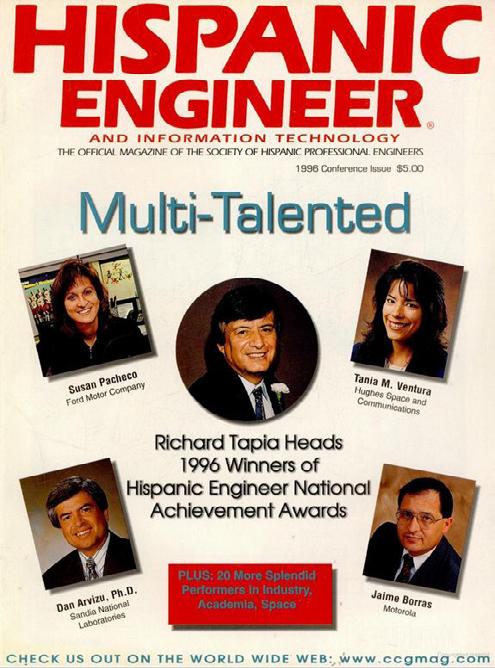
space station, and go on to Mars?'
A 1998 edition featured the top employers of Hispanic technical talent.
The list included Lockheed Martin, Raytheon, Ford, Mobil, Mitsubishi, Dell Computer, Eli Lilly and Company, Baltimore Gas & Electric, Battelle Memorial Ernst & Young, Booz Allen Hamilton, Corning, Cummins, Frito Lay, Hershey Foods, GM, Sandia National Labs, Qualcomm, Texaco, and Whirlpool.
Other influential figures featured in the magazine included Jorge Diaz, then vice president for space and transportation systems at Rockwell, and Lydia VillaKomaroff, the third Mexican-American woman in the United States to receive a Ph.D. in the hard sciences. Her work with the Association for Women in Science and as a founding member of the Society for the Advancement of Chicanos and Native Americans made a huge impact.
In one program sponsored by MIT, she explained that students in area high schools were always surprised to see that all three scientists tapped to speak for Career Day were women. HE

Continue to follow Hispanic Engineer magazine at www.hispanicengineer.com














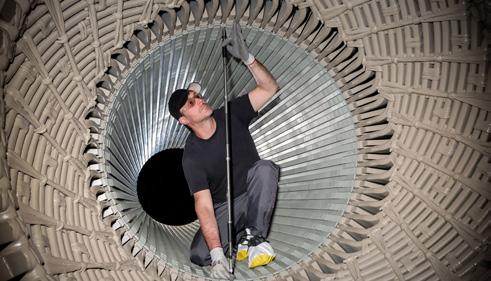





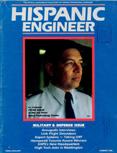
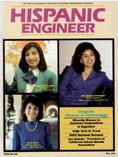
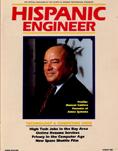
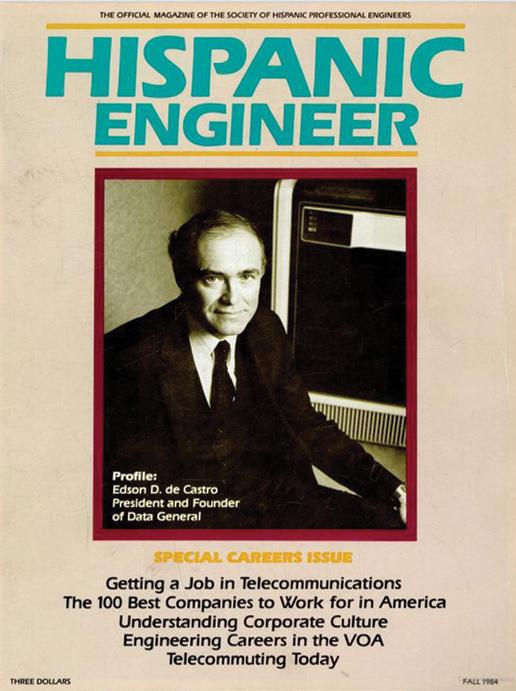
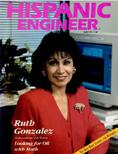






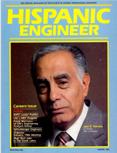
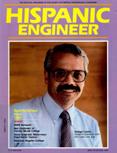
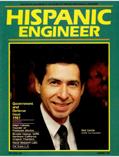




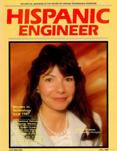
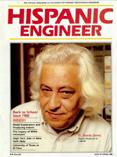

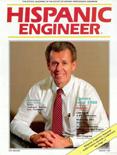


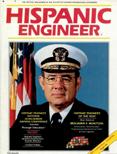


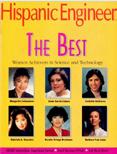



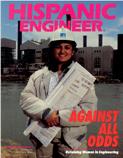






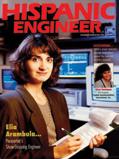
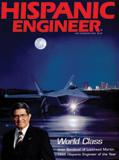
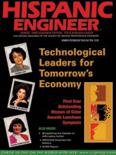

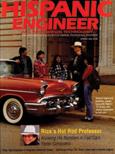



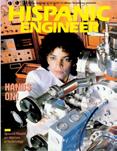


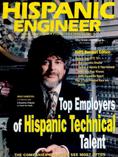

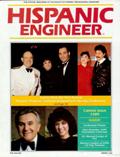
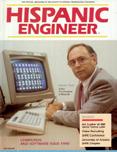

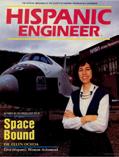

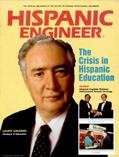

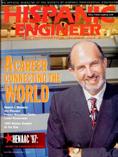



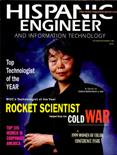
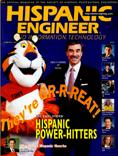
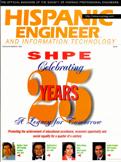

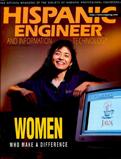





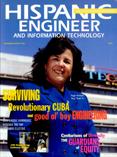



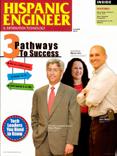
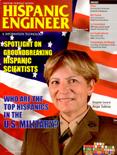
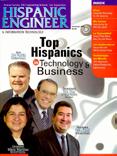


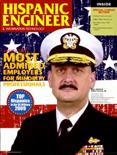


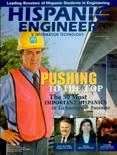

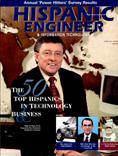



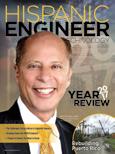



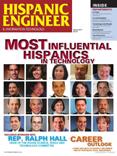
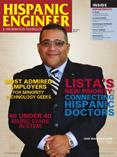
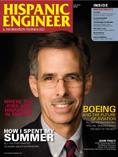



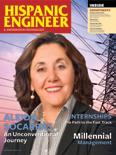
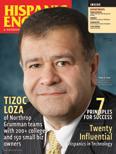



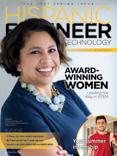
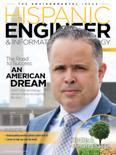





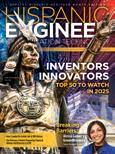

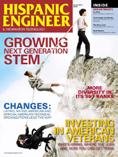
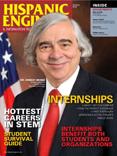
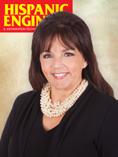
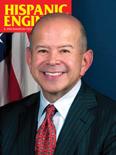




Use
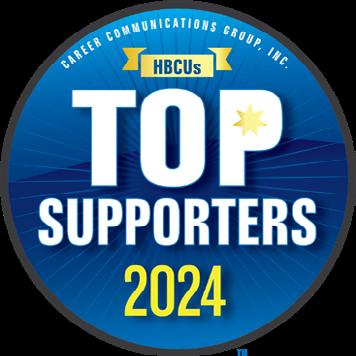

Find
Find
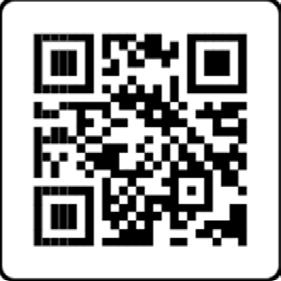






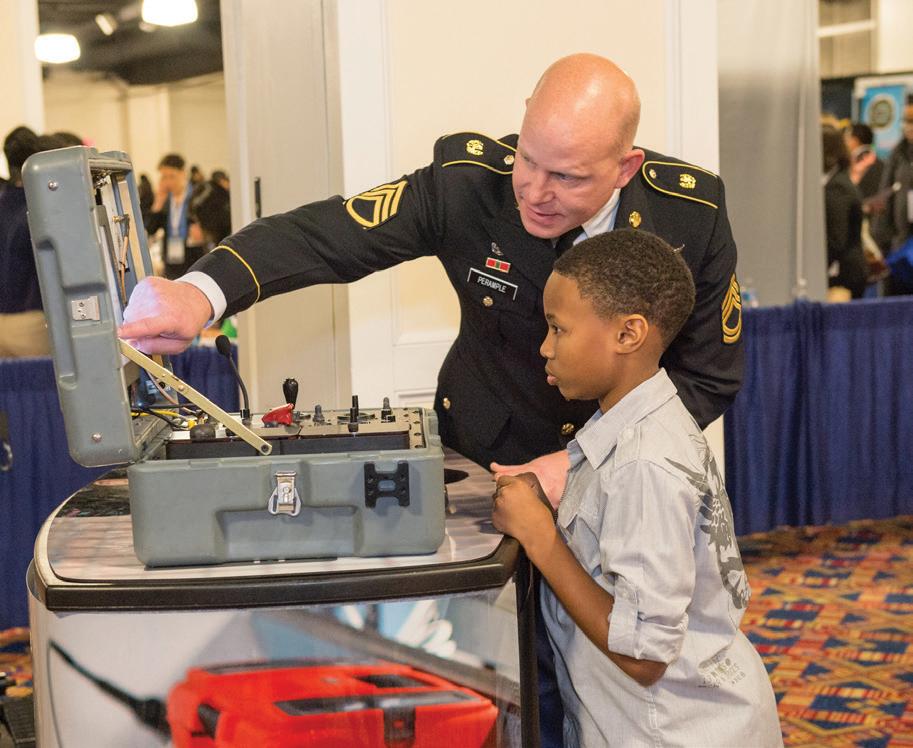

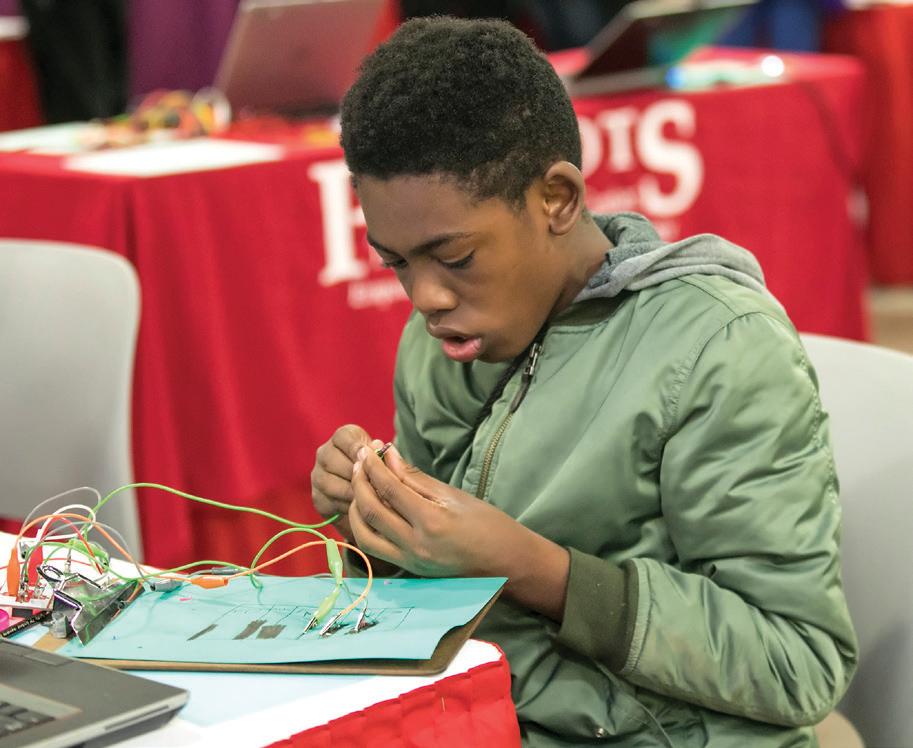
Many engineers from Latin America are all too familiar with the economic and environmental impacts of challenges like climate change, pollution, and deforestation. As a result, many Hispanic engineers, armed with this intimate familiarity with sustainability challenges, lead the way forward with the innovative, practical solutions we need for the future. A brief journey through the past reveals the essential role Hispanic engineers play in the global sustainability and infrastructure projects of the present and future. Firsthand experience with many of the challenges facing our world today gives these engineers unique insights, allowing them to lead by example.
From finding new ways to “recreate” clean water to developing sustainable energy solutions and transportation networks, Hispanic engineers are tackling some of the world’s most pressing issues. However, to fully celebrate their achievements, we must also share their stories.
that affects billions of people worldwide, with many residing in Spanish-speaking countries. Take Mexico, for example, where the UN and UNICEF estimate that 57 percent of households don’t have access to a safely managed water supply.
Sustainable industrial engineer Enrique Lomnitz noticed that Mexico’s water crisis had a noticeable but underutilized solution: urban rainwater collection.
After graduating from the Rhode Island School of Design in 2006, Lomnitz, along with cofounder Renata Fenton, developed a simple way for Mexican citizens to collect their rainwater in tanks. In the process, the pair founded Isla Urbana, a nonprofit organization dedicated to bringing sustainable rainwater harvesting kits to drought-affected and impoverished communities in Mexico.
a third pass through a carbon filter. This removes potential contaminants, ensuring the water can be safely used for months to come. Since 2009, Isla Urbana has installed over 20,000 urban rainwater collection systems throughout Mexico.
Another key aspect of the organization’s mission is educating local communities on incorporating sustainable rainwater harvesting into their daily routines. Lomnitz also regularly lobbies and advocates for legislation that leverages rainwater harvesting for public city water systems, fighting to increase access to clean water for those who need it most.

The water crisis is a global challenge
Isla Urbana was a huge success, thanks in large part to its ingenious design. First, rainwater that falls onto a home’s roof gets funneled down and captured in a “first-flush” mechanism to remove any sediment that may wash in from the rooftop. The collected water then undergoes a filtering process that includes chlorination, a second pass through a sediment filter, and
Founded by environmentalist and civil engineer Alexis Massol González and his wife, Faustina “Tinti” Deyá Díaz, in 1980, Casa Pueblo has since hosted numerous projects and fundraisers that address issues at the intersection of politics and environmentalism. One highlight is 50% con Sol, a project that aims to ensure that 50 percent of the power used in Puerto Rico comes from solar energy.
Another is The People’s Forest, which saw the organization reclaim land from illegal mining companies and transform it into the world's first entirely community-managed nature reserve. Beyond community service and environmental projects, Casa Pueblo has also undertaken various investments, including a custom coffee brand, an ecotourism ranch, a historical archive, and a solarpowered movie theater that showcases presentations and documentaries on environmentalism. One needs to look no further than Casa Pueblo and the lifetime achievements of González to see how a single community can come together to change not just itself but the world around it.

"One highlight is 50% con Sol, a project that aims to ensure that 50% of the power used in Puerto Rico comes from solar energy."
Born in 1959 as the child of rural tenant farmers in Boyacá, Colombia, scientist Carlos Moreno was no stranger to the limitations created by physical distance. Despite growing up in rural Tunja with parents who could not read or write, Moreno received an education through scholarship funds and later continued his studies overseas in Paris. Throughout the 1990s and 2000s, Moreno made significant contributions to the field of robotics, working on a range of projects, from aircraft to steam generator controls and nuclear power plants. By the 2010s, Moreno’s work had shifted to urban planning and transportation infrastructure. In 2015, he coined the term “15-minute city”— an urban planning concept in which daily necessities like work, shopping, health care, and leisure can be easily reached via a 15-minute walk, bike ride, or public transit ride from any point in the city.
Moreno’s concept laid the foundation for a new era of urban planning, one that would focus on returning to a more local way of life. The 15-minute
city framework pushes communities to design cities in a way that supports a better work-life balance, shorter commutes, and less reliance on pollution-causing motor vehicles. The concept gained traction quickly, with Paris's Mayor Anne Hidalgo introducing a plan to implement the 15-minute city concept during her 2020 campaign. In the years since, many cities worldwide have adopted a similar goal, and researchers worldwide have utilized the 15-minute model as a tool for evaluating accessibility in urban areas. HE

Stay connected to the community by visiting www.hispanicengineer.com



As technology continues to reshape our world, science, technology, engineering, and mathematics (STEM) careers are more critical than ever. STEM fields are not only on the frontline of innovation but also play an essential role in solving some of the most pressing global challenges.
The STEM landscape is evolving rapidly, with several fields experiencing unprecedented growth. Leading the charge are areas like artificial intelligence (AI) and data science, which have transformed everything from consumer products to industrial operations. The integration of AI into nearly every sector is creating a demand for professionals skilled in machine learning, data analysis, and ethical AI applications. Similarly, biotechnology is advancing quickly, particularly in areas like gene editing and personalized medicine, promising to revolutionize health care and extend human life.
by CCG Editors editors@ccgmag.com
"The future of STEM promises exciting opportunities and a chance to contribute to the solutions of tomorrow."
Emerging technologies like quantum computing and robotics hold tremendous potential to disrupt traditional industries and create new market segments. Quantum computing, still in its early stages, could solve complex problems beyond the capabilities of today’s supercomputers,

while advancements in robotics have implications for manufacturing, health care, and beyond.
Today’s STEM professionals are tasked with addressing global challenges such as climate change, energy solutions, and health care disparities. Environmental science and renewable energy sectors, for instance, are essential to developing sustainable solutions, from carbon capture technologies to alternative fuels. As these areas expand, they are likely to create a substantial number of new positions dedicated to creating a healthier planet.
Several forces are contributing to the rising demand for STEM professionals. Technological advancements are one of the primary drivers, creating new industries and reshaping old ones. Innovations in automation, digitalization, and artificial intelligence are reshaping the labor market, necessitating a workforce equipped with relevant technical skills.
Economic growth and social needs are also significant drivers. With the expansion of the digital economy and a growing emphasis on data-driven decision making, companies across sectors—from finance to agriculture— need skilled STEM professionals to stay competitive. Additionally, the growing reliance on technology in everyday life

has intensified the demand for cyber security experts, software developers, and data scientists, making STEM careers more vital than ever.
Government policies and initiatives play a crucial role in STEM’s trajectory, investing heavily in STEM education and research funding, recognizing the importance of a skilled STEM workforce for national economic strength and global competitiveness. Education reforms and grant funding for research are critical in preparing students for STEM careers. Partnerships between educational institutions and industries, such as internships and collaborative research projects, are helping bridge the gap between academia and industry, making it easier for students to transition into the workforce.
STEM offers a wide range of career opportunities, catering to diverse interests and skill sets. Traditional roles such as engineers and scientists remain in high demand, but newer positions are emerging to keep pace with technological advances. Careers like data analysts, cyber security experts, and bioinformaticians are becoming increasingly popular as industries recognize the need for specialized skills to harness data, protect digital assets, and drive innovation.
To succeed in these roles, STEM
professionals need not only technical expertise but also adaptability, critical thinking, and problem-solving skills. Education pathways vary, with many starting in undergraduate STEM programs and later pursuing graduate degrees for advanced knowledge. Certifications and internships also provide valuable practical experience, equipping students with hands-on skills and industry insights.
The future of STEM careers is bright, though not without challenges. With rapid technological change, professionals will need to embrace lifelong learning to keep up with evolving tools and methodologies. Opportunities abound, especially for those who can adapt and continue learning; this includes mastering new programming languages, staying updated on scientific advancements, and building cross-disciplinary skills.
For students aspiring to a STEM career, adaptability and a proactive approach to learning are key. Gaining handson experience through internships, participating in STEM clubs or projects, and building a strong foundation in mathematics and science are excellent steps toward success. For anyone ready to embrace the challenges of an everchanging landscape, the future of STEM promises exciting opportunities and a chance to contribute to the solutions of tomorrow. HE

Read more STEM stories just like this over at www.hispanicengineer.com
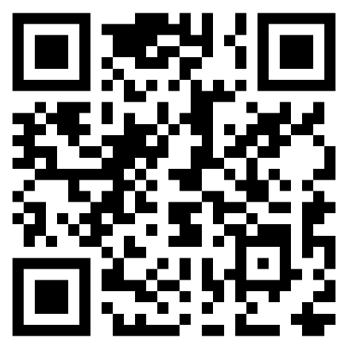



As a global life science company, Sartorius is part of the solution in the fight against cancer, dementia, and many other diseases. This offers numerous opportunities for our people to grow with us and make an impact with their work.
Apply today: www.sartorius.com/careers
Sartorius is an equal opportunity employer and will consider all qualified applicants for employment without regard to race, color, religion, sex, national origin, age, protected veteran status, or disability, or based on status in any other protected group or class.

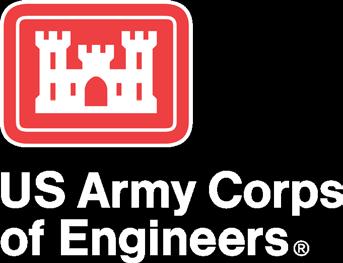
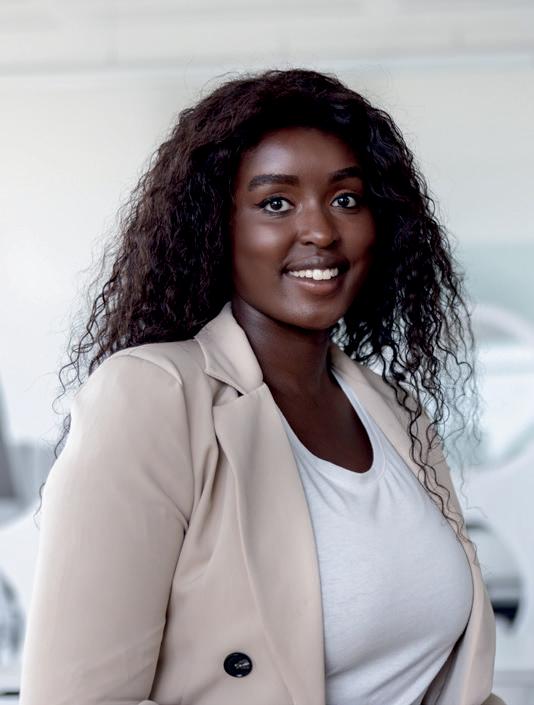



I love working for the organization because I get to be a part of a talented and diverse team of professionals that collaboratively work together to meet the needs of the organization, the community, the Region and the Nation. This gives me a sense of instant gratification.
- Narissia Skinner, Executive Assistant
The U.S. Army Corps of Engineers has approximately 37,000 dedicated Civilians and Soldiers delivering engineering services to customers in more than 130 countries worldwide.



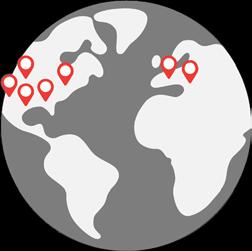


https://www.usace.army.mil/careers/ Come work with us . . . anywhere!
Mission Critical Occupations:
• General Natural Resources Management and Biological Sciences series (0401)
• Engineering Technical series (0802)
• Construction Control Technical series (0809)
• Civil Engineering series (0810)
• Mechanical Engineering series (0830)
• Electrical Engineering series (0850)
• Contract Specialist series (1102)
• Realty series (1170)
• Lock and Dam Operating series (5426)
• IT Specialist (2210)




Our workforce inspires, builds and delivers business results from idea to outcome.

We are one of the fastest-growing technology companies and we’d love to have you here!
Visit wwt.com/careers to learn more